| ???/??? | 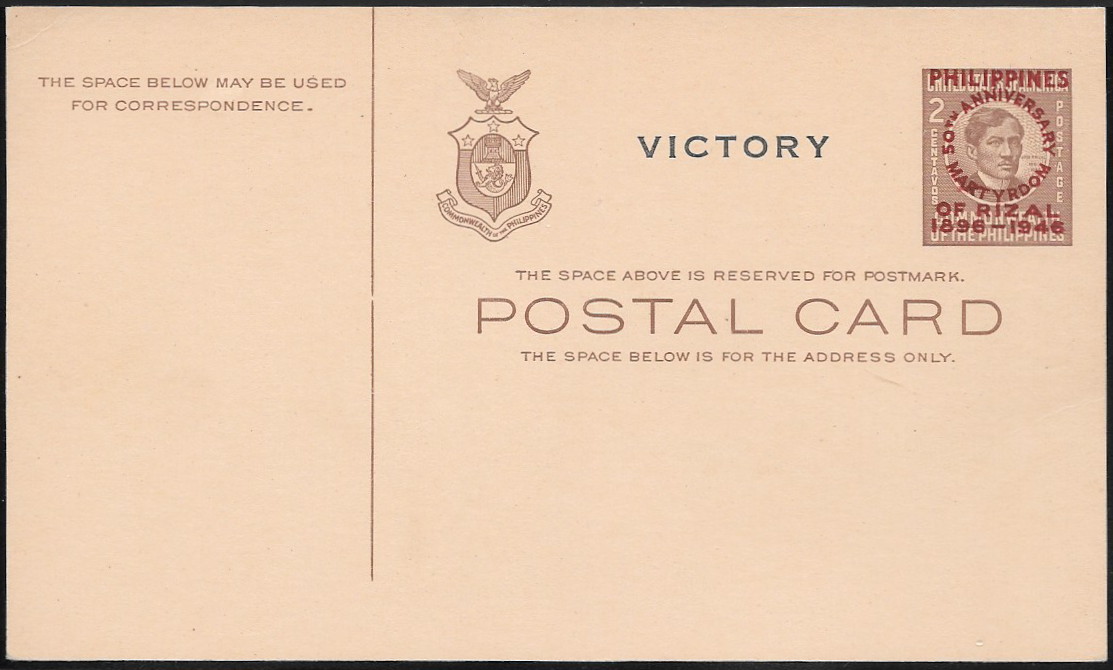
Short Dividing Line
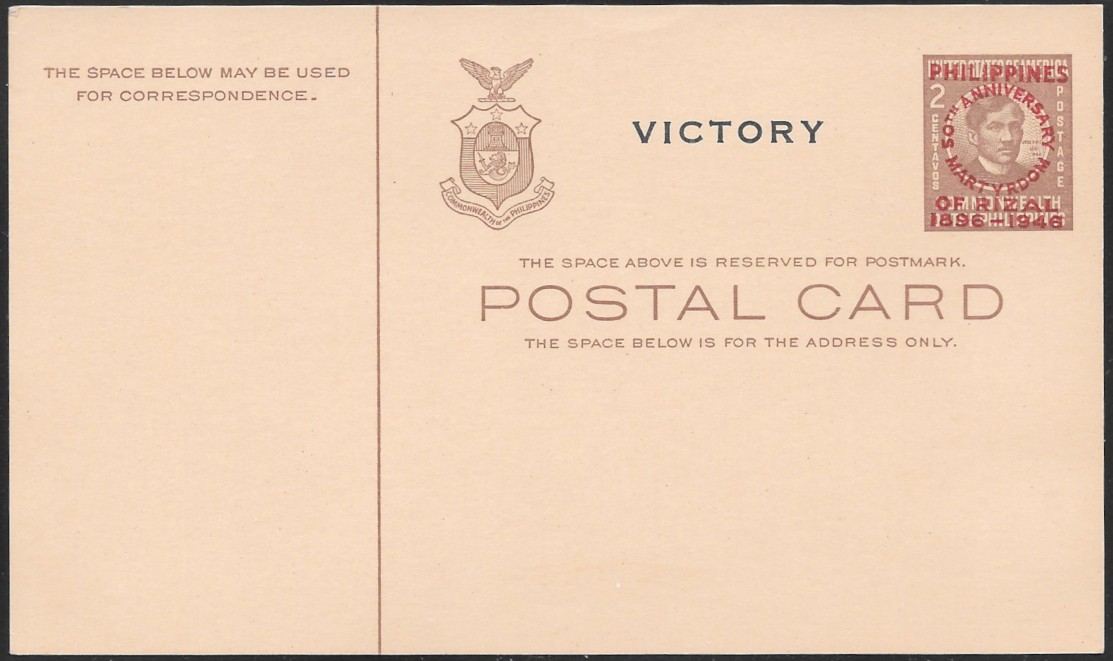
Full Dividing Line | 1946 | Rizal 2c brown with overprint in red. “PHILIPPINES” covering up “UNITED STATES OF AMERICA”. “50th Anniversary Martyrdom of Rizal 1896-1946” is also printed across the stamp. The postal card contains the word “VICTORY” in black between the seal of the Philippines and the stamp of Rizal.
Exists in 2 varieties, firstly with the dividing line running all the way from top to bottom and then with a shortened dividing line. |
| ???/??? | 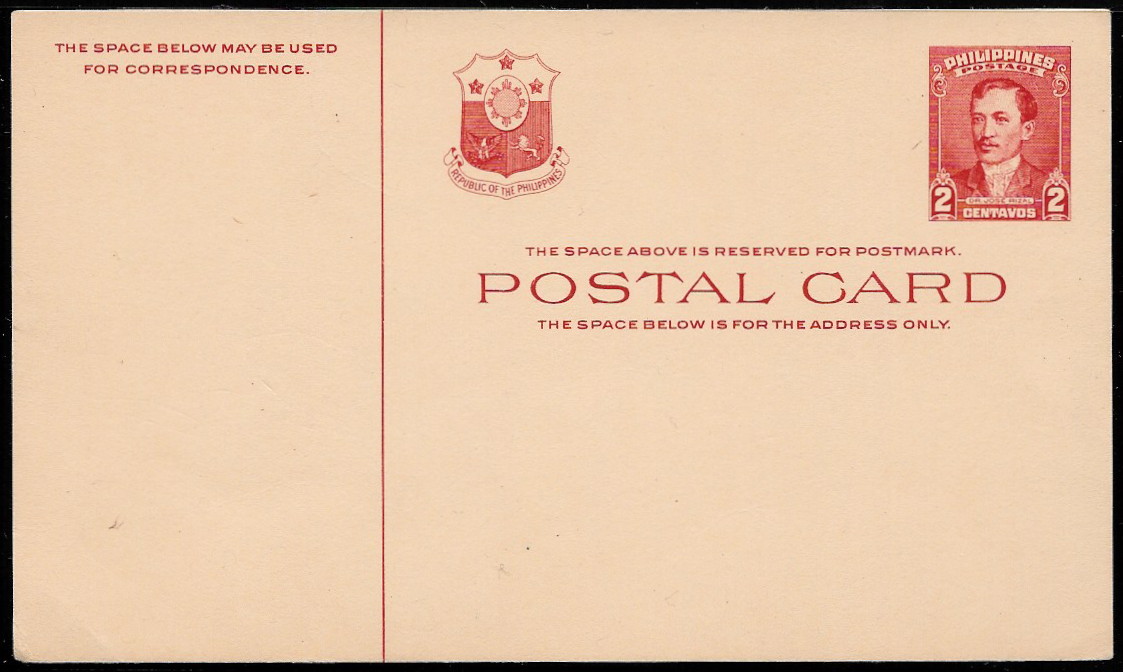 | 1948 | Rizal 2c red. Has the new seal of the Republic of the Philippines. |
| ???/??? | 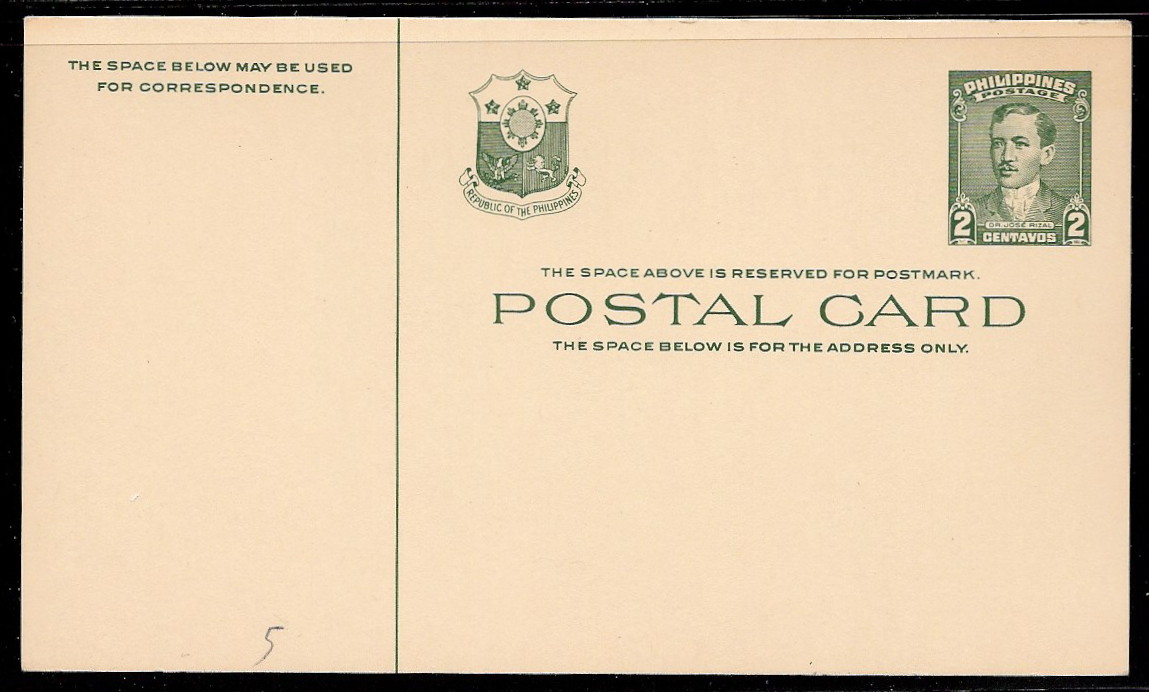 | 1952 | Rizal 2c green. The same as the previous postal card except for the print color. |
| ???/??? | 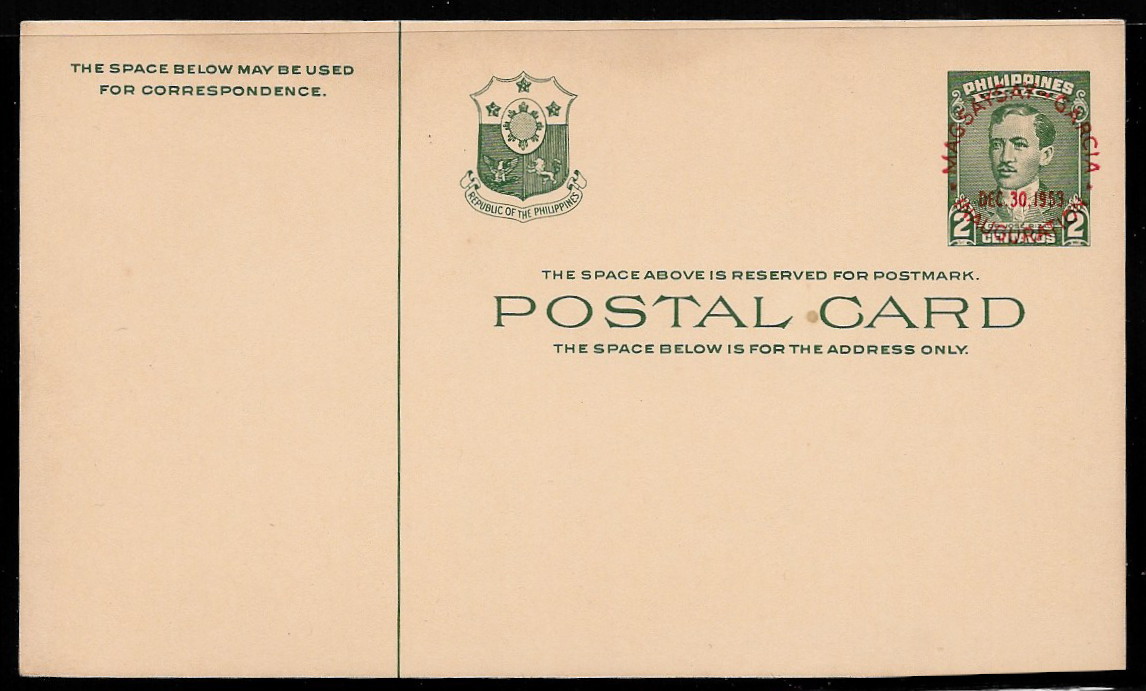 | 1953 | Rizal 2c green, as per the previous postal card though with “Magsaysay – Garcia * Inauguration * Dec 30, 1953” overprinted in red. |
| ???/??? | 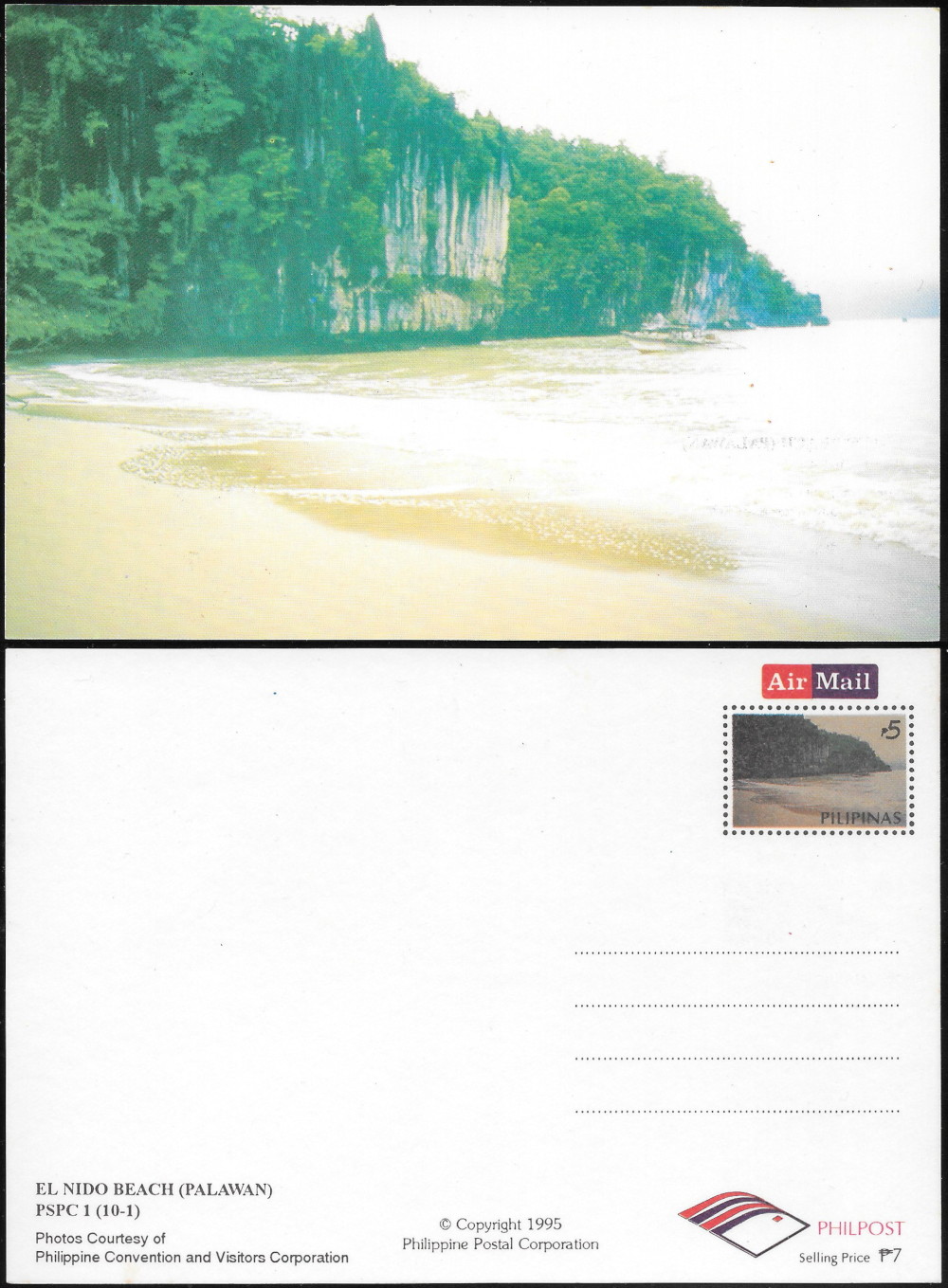 | 1995 | Card #1 – “El Nido Beach (Palawan)” from a set of 10 postal cards released in 1995.
All cards depict tourist destinations within the Philippines. |
| ???/??? | 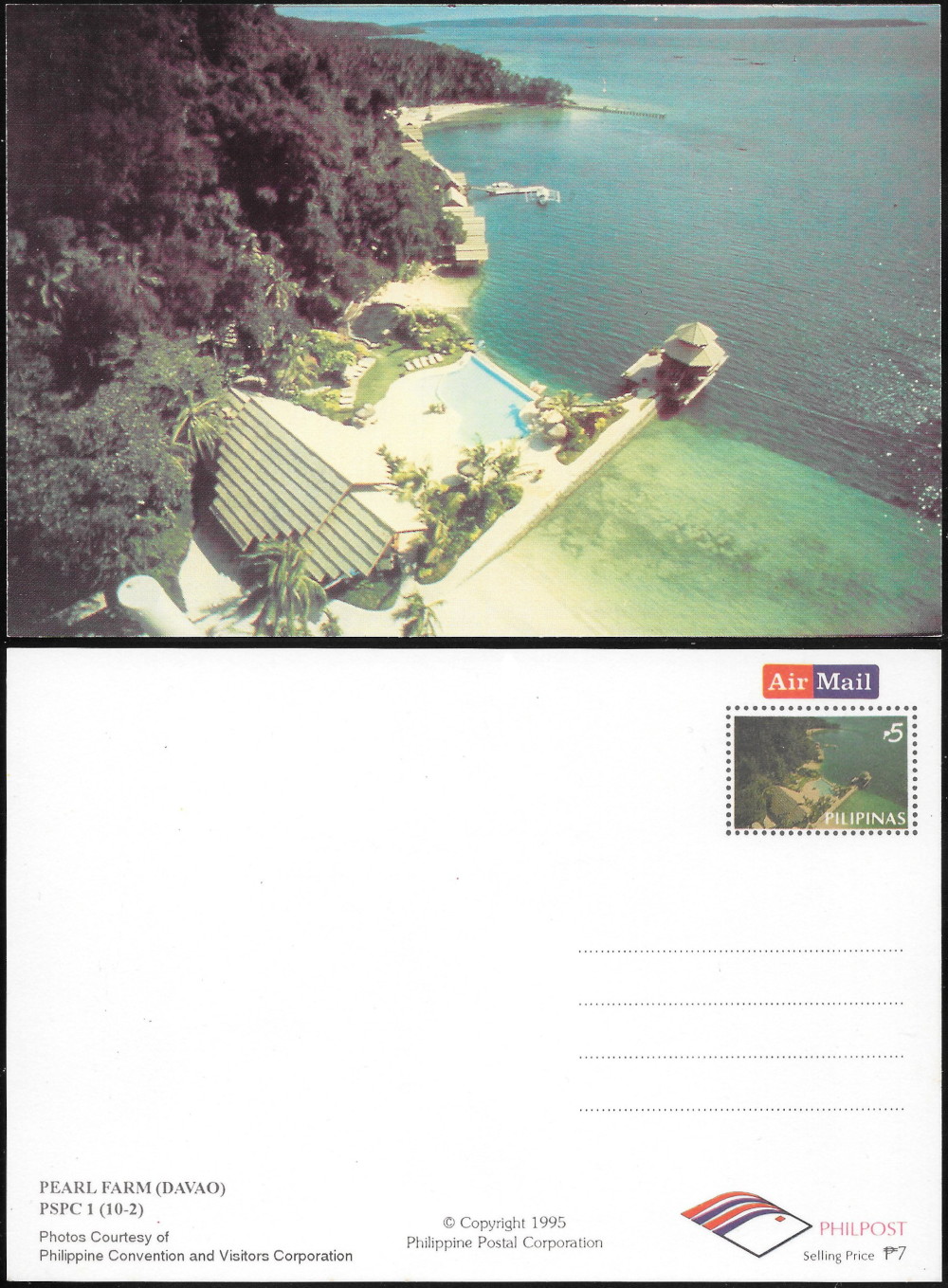 | 1995 | Card #2 – “Pearl Farm (Davao)” from a set of 10 postal cards released in 1995.
All cards depict tourist destinations within the Philippines. |
| ???/??? | not acquired | 1995 | Card #3 – from a set of 10 postal cards released in 1995.
All cards depict tourist destinations within the Philippines |
| ???/??? | 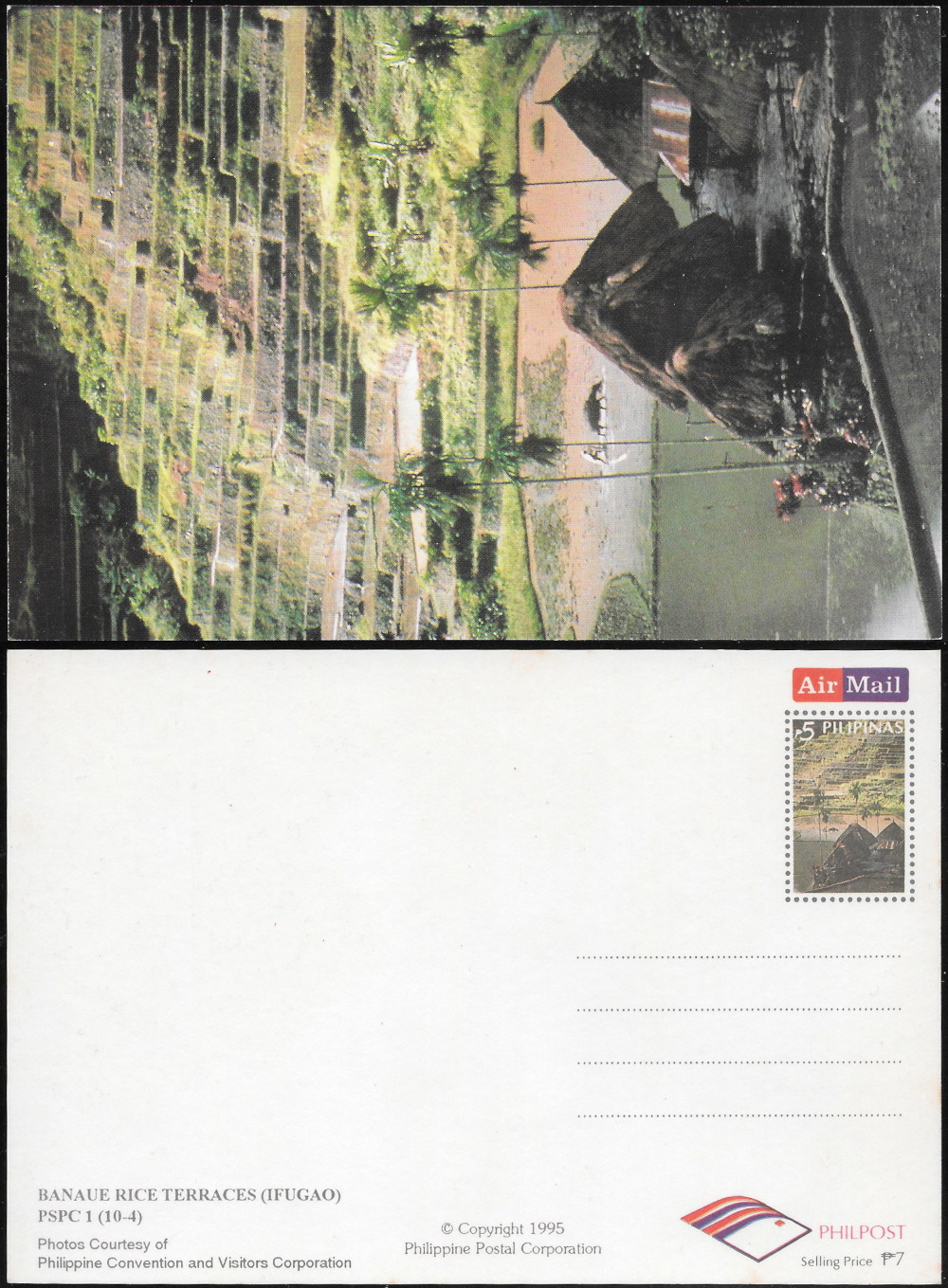 | 1995 | Card #4 – “Benaue Rice Terraces (Ifugao)” from a set of 10 postal cards released in 1995.
All cards depict tourist destinations within the Philippines. |
| ???/??? | 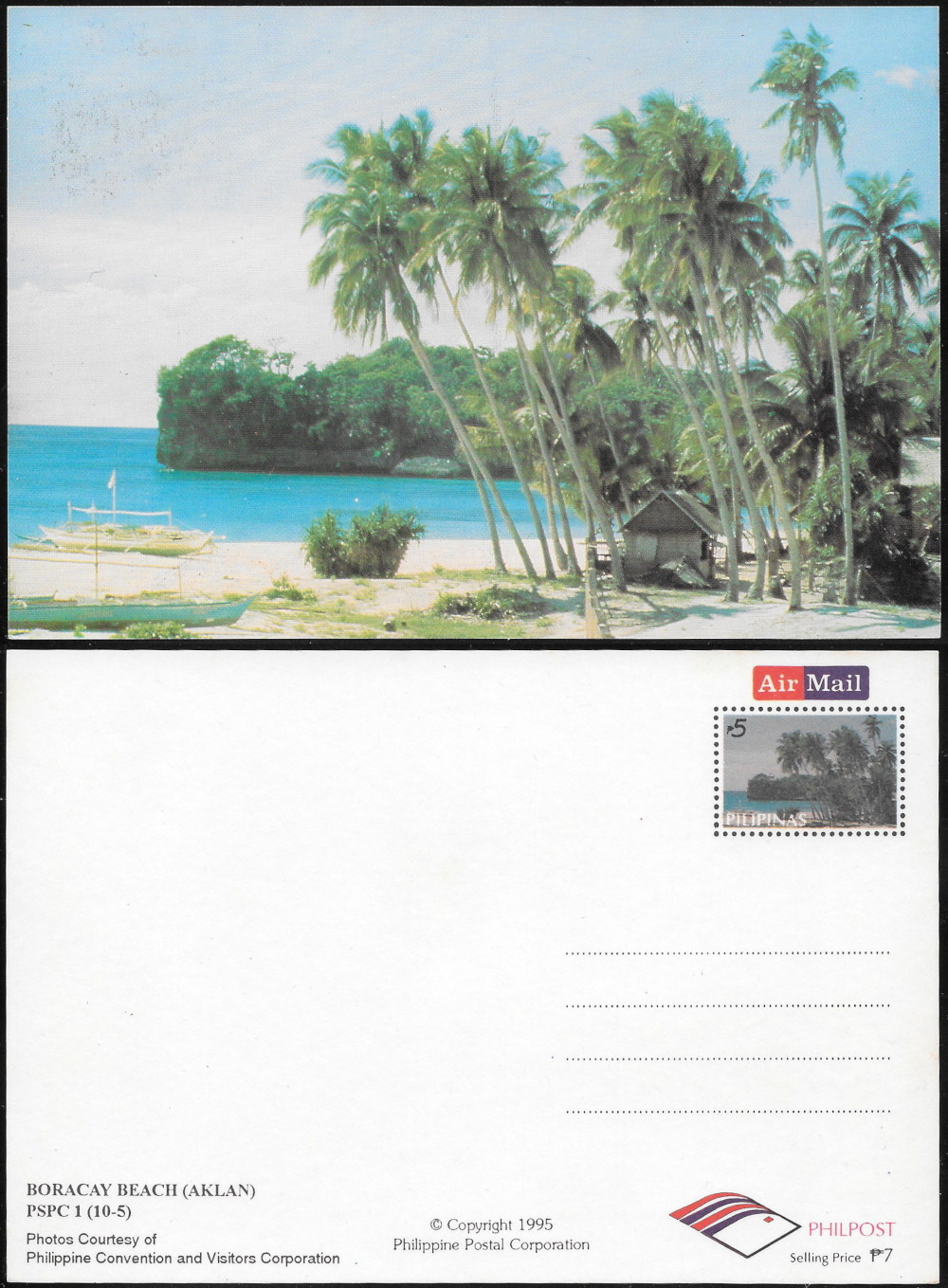 | 1995 | Card #5 – “Boracay Beach (Aklan)” from a set of 10 postal cards released in 1995.
All cards depict tourist destinations within the Philippines. |
| ???/??? | not acquired | 1995 | Card #6 – from a set of 10 postal cards released in 1995.
All cards depict tourist destinations within the Philippines |
| ???/??? | 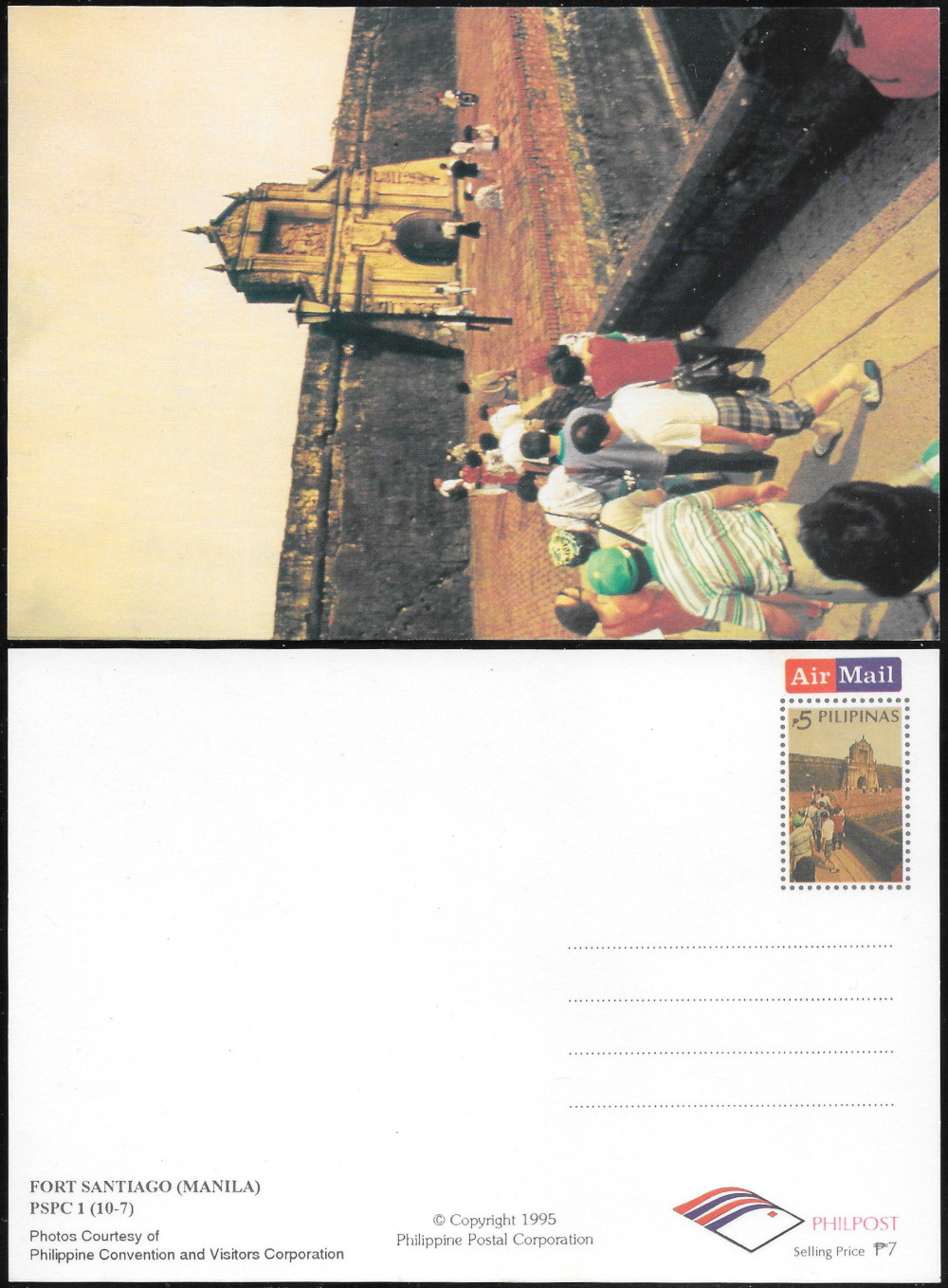 | 1995 | Card #7 – “Fort Santiago (Manila)” from a set of 10 postal cards released in 1995.
All cards depict tourist destinations within the Philippines. |
| ???/??? | not acquired | 1995 | Card #8 – from a set of 10 postal cards released in 1995.
All cards depict tourist destinations within the Philippines |
| ???/??? | not acquired | 1995 | Card #9 – from a set of 10 postal cards released in 1995.
All cards depict tourist destinations within the Philippines |
| ???/??? | 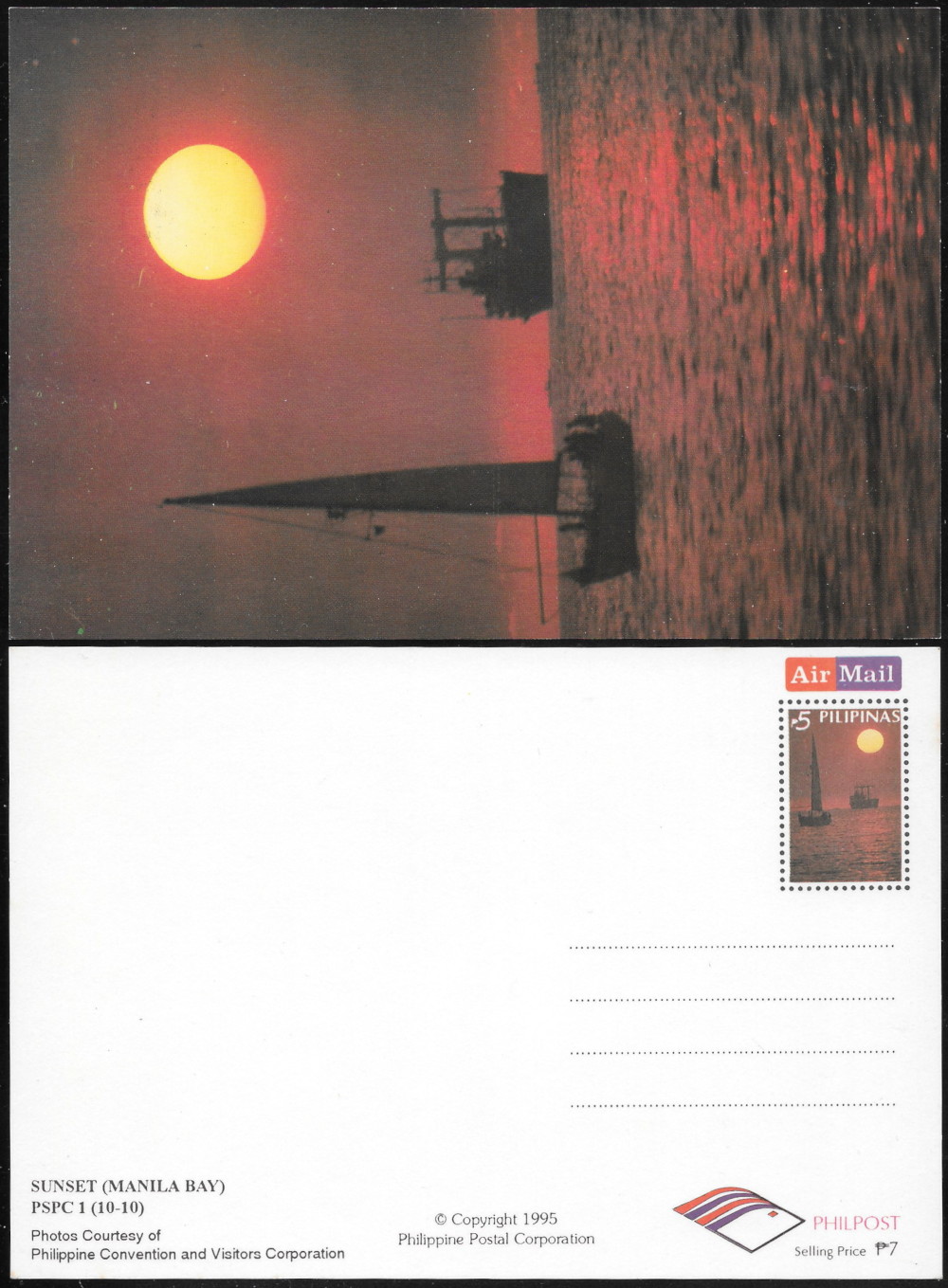 | 1995 | Card #10 – “Sunset (Manila Bay)” from a set of 10 postal cards released in 1995.
All cards depict tourist destinations within the Philippines. |
| ???/??? | 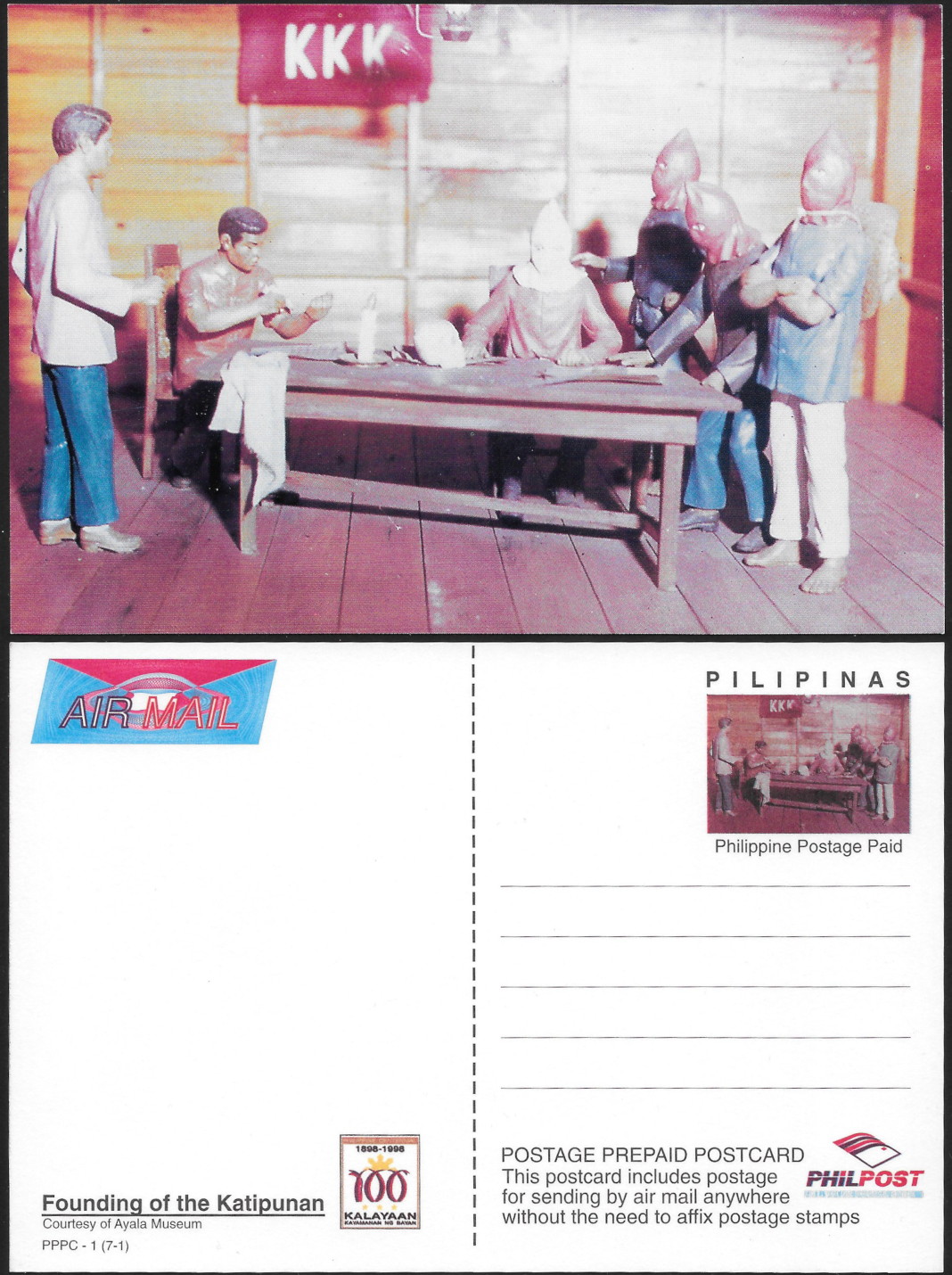
| 1998 | Card #1 – “Founding of the Katipunan” from a set of 8 postal cards released in 1998. All cards (except #8) depict different scenes from a model on display at the Ayala Museum. Card #8 has a photograph of the Rizal Monument.
The set commemorates the centenary of Philippine Independence from the Spanish.
|
| ???/??? | 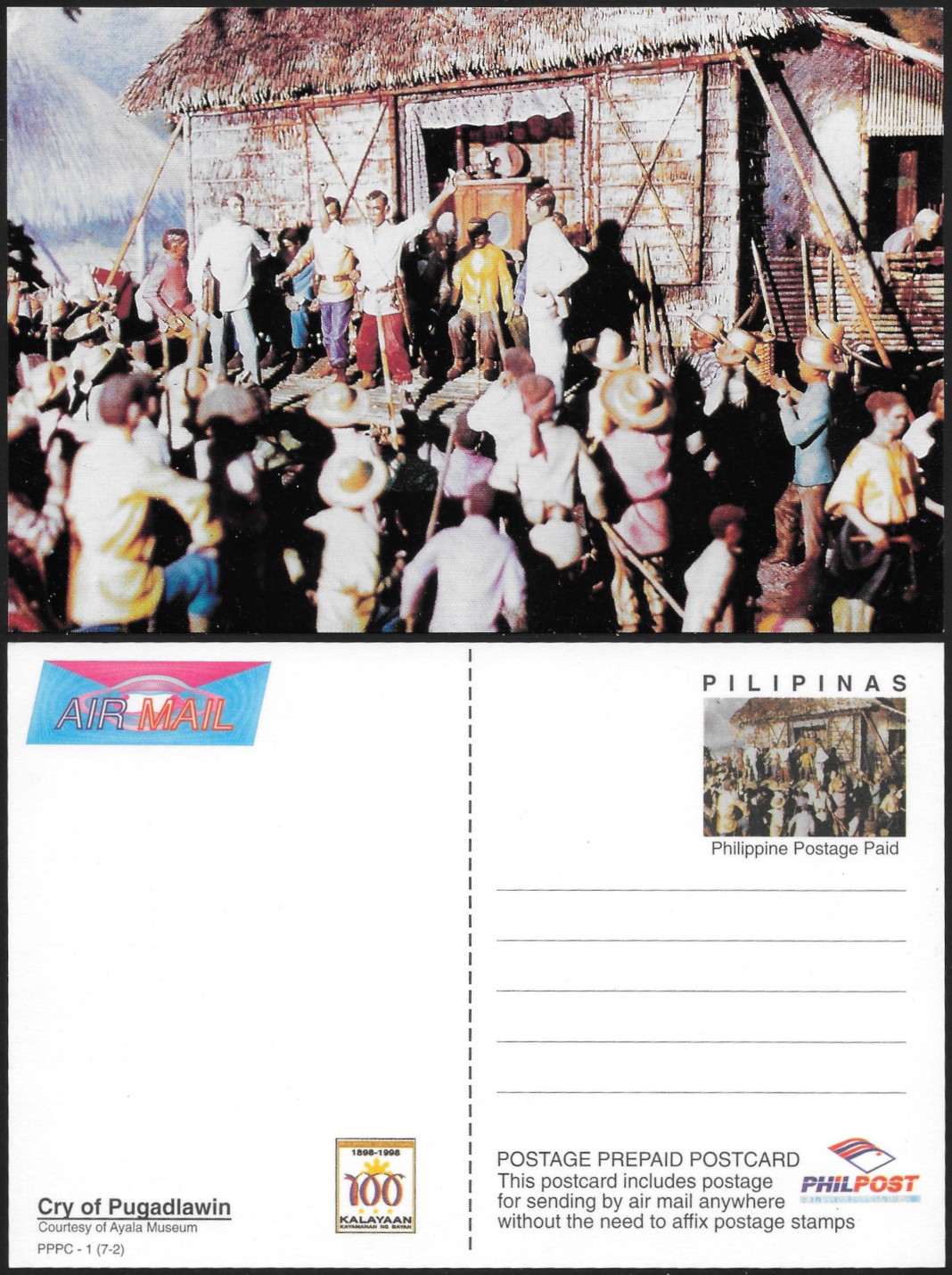 | 1998 | Card #2 – “Cry of Pugadlawin” from a set of 8 postal cards released in 1998. All cards (except #8) depict different scenes from a model on display at the Ayala Museum. Card #8 has a photograph of the Rizal Monument.
The set commemorates the centenary of Philippine Independence from the Spanish. |
| ???/??? | 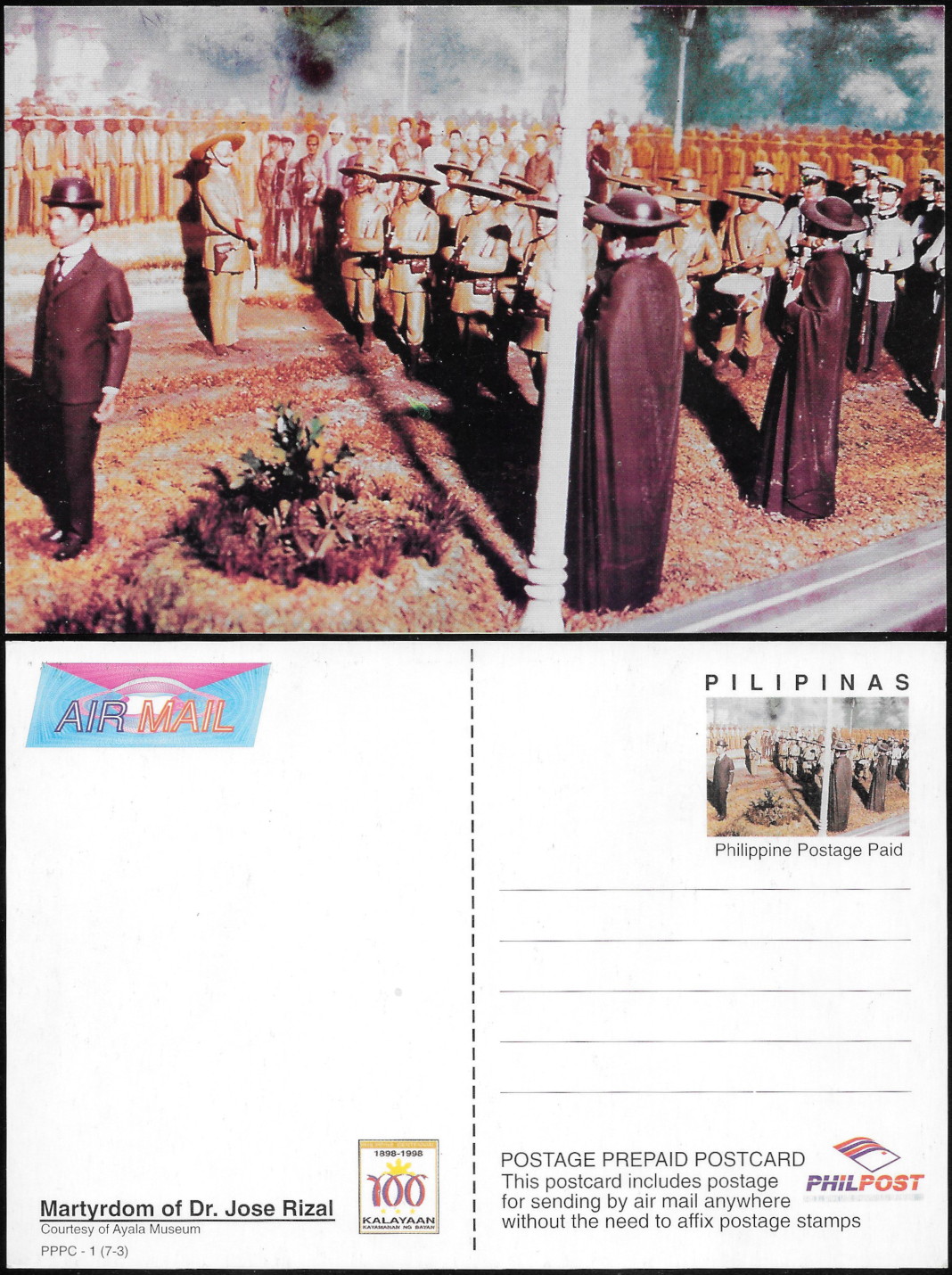 | 1998 | Card #3 – “Martyrdom of Dr. Jose Rizal” from a set of 8 postal cards released in 1998. All cards (except #8) depict different scenes from a model on display at the Ayala Museum. Card #8 has a photograph of the Rizal Monument.
The set commemorates the centenary of Philippine Independence from the Spanish. |
| ???/??? | 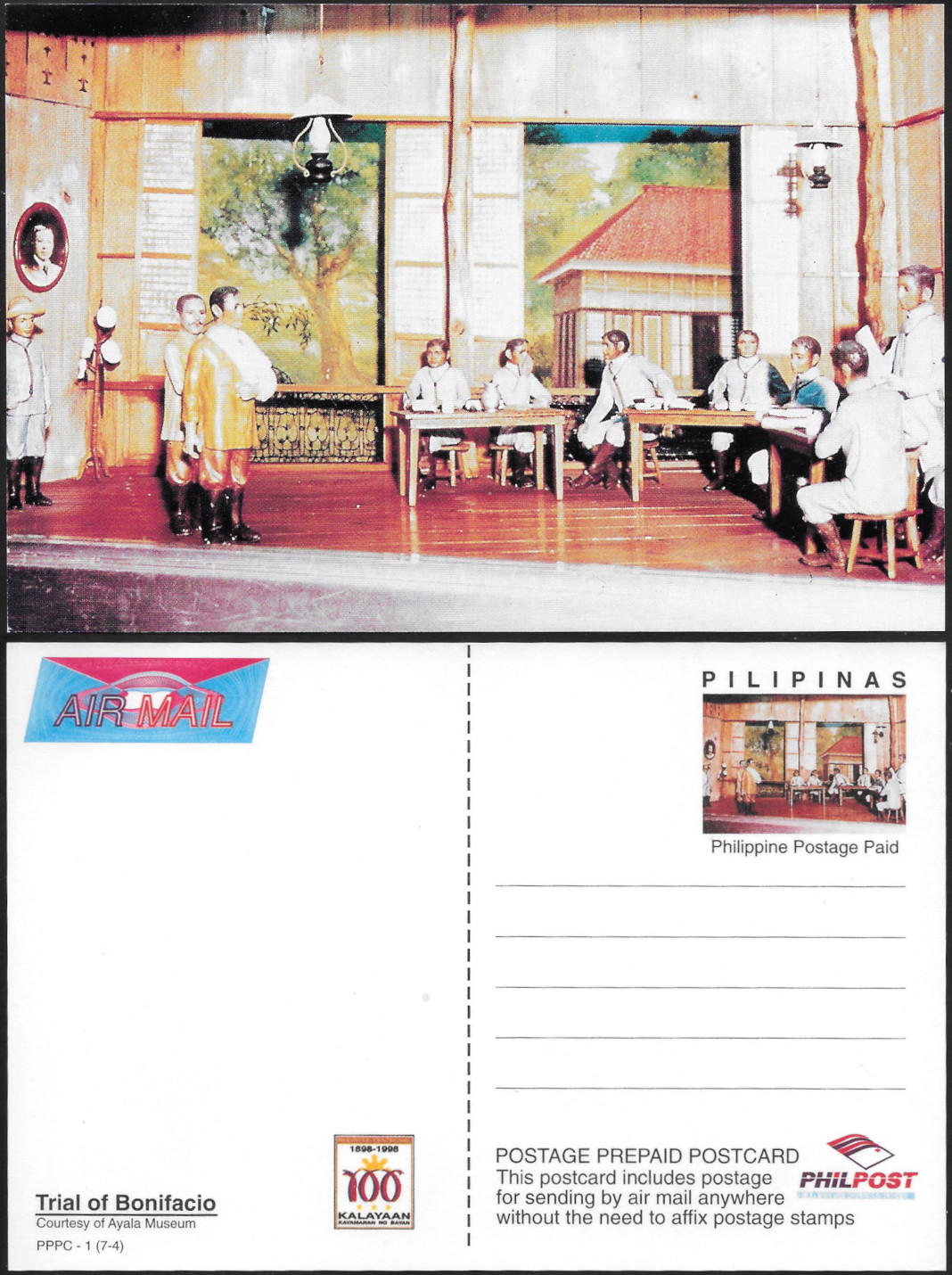 | 1998 | Card #4 – “Martyrdom of Dr. Jose Rizal” from a set of 8 postal cards released in 1998. All cards (except #8) depict different scenes from a model on display at the Ayala Museum. Card #8 has a photograph of the Rizal Monument.
The set commemorates the centenary of Philippine Independence from the Spanish. |
| ???/??? | 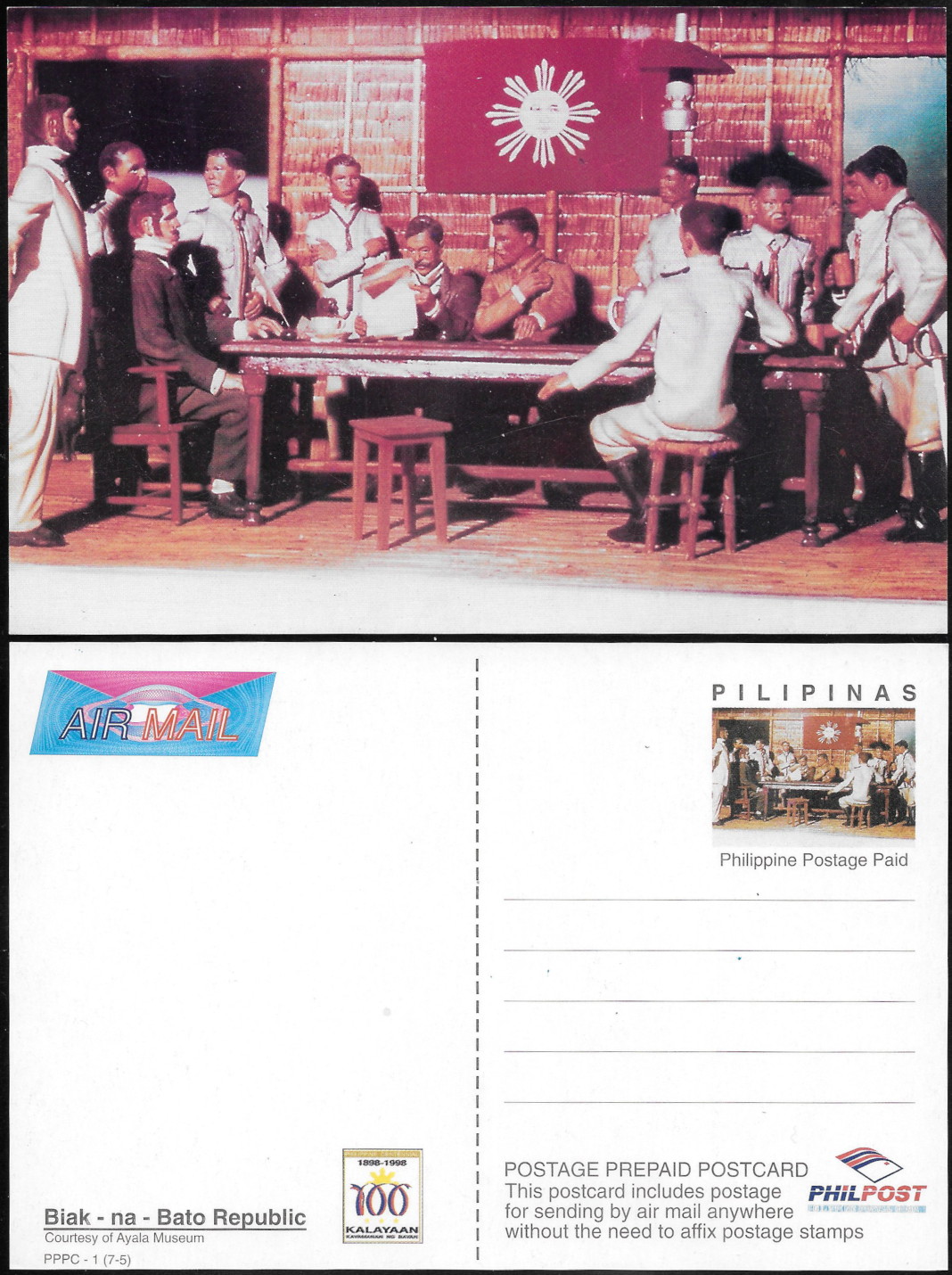 | 1998 | Card #5 – “Biak – na – Bato Republik” from a set of 8 postal cards released in 1998. All cards (except #8) depict different scenes from a model on display at the Ayala Museum. Card #8 has a photograph of the Rizal Monument.
The set commemorates the centenary of Philippine Independence from the Spanish. |
| ???/??? | 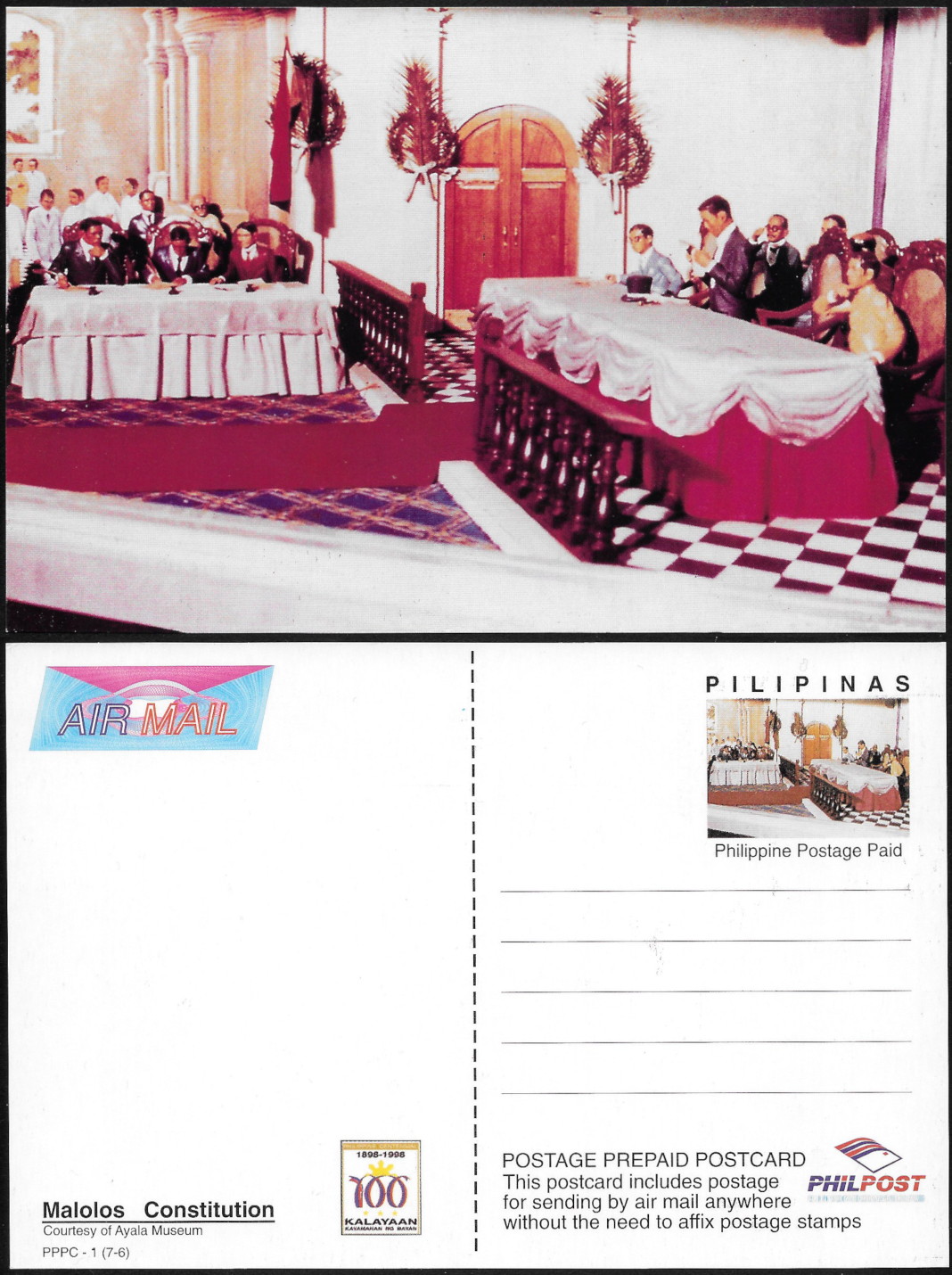 | 1998 | Card #6 – “Malolos Constitution” from a set of 8 postal cards released in 1998. All cards (except #8) depict different scenes from a model on display at the Ayala Museum. Card #8 has a photograph of the Rizal Monument.
The set commemorates the centenary of Philippine Independence from the Spanish. |
| ???/??? | 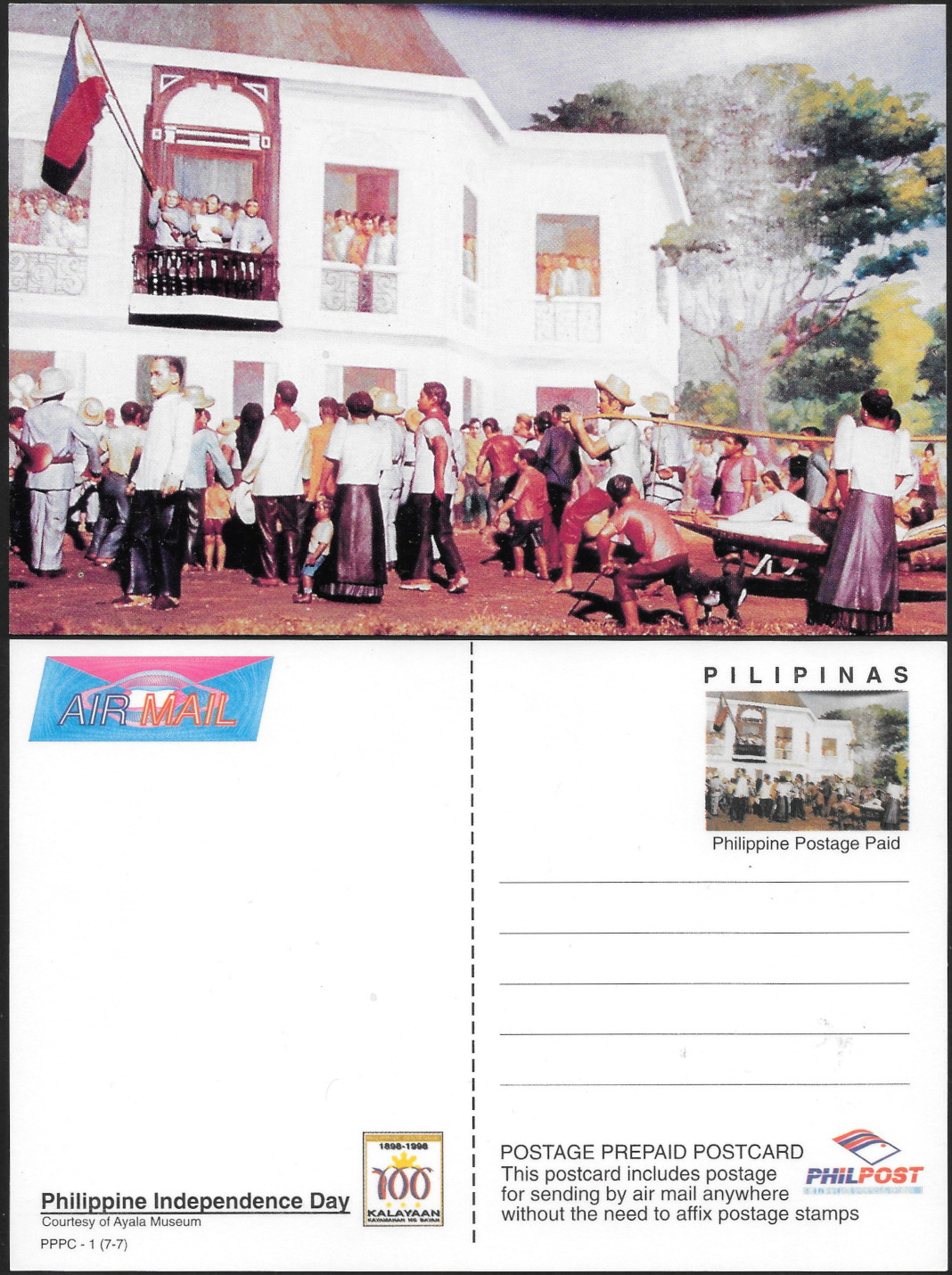 | 1998 | Card #7 – “Trial of Bonifacio” from a set of 8 postal cards released in 1998. All cards (except #8) depict different scenes from a model on display at the Ayala Museum. Card #8 has a photograph of the Rizal Monument.
The set commemorates the centenary of Philippine Independence from the Spanish. |
| ???/??? | 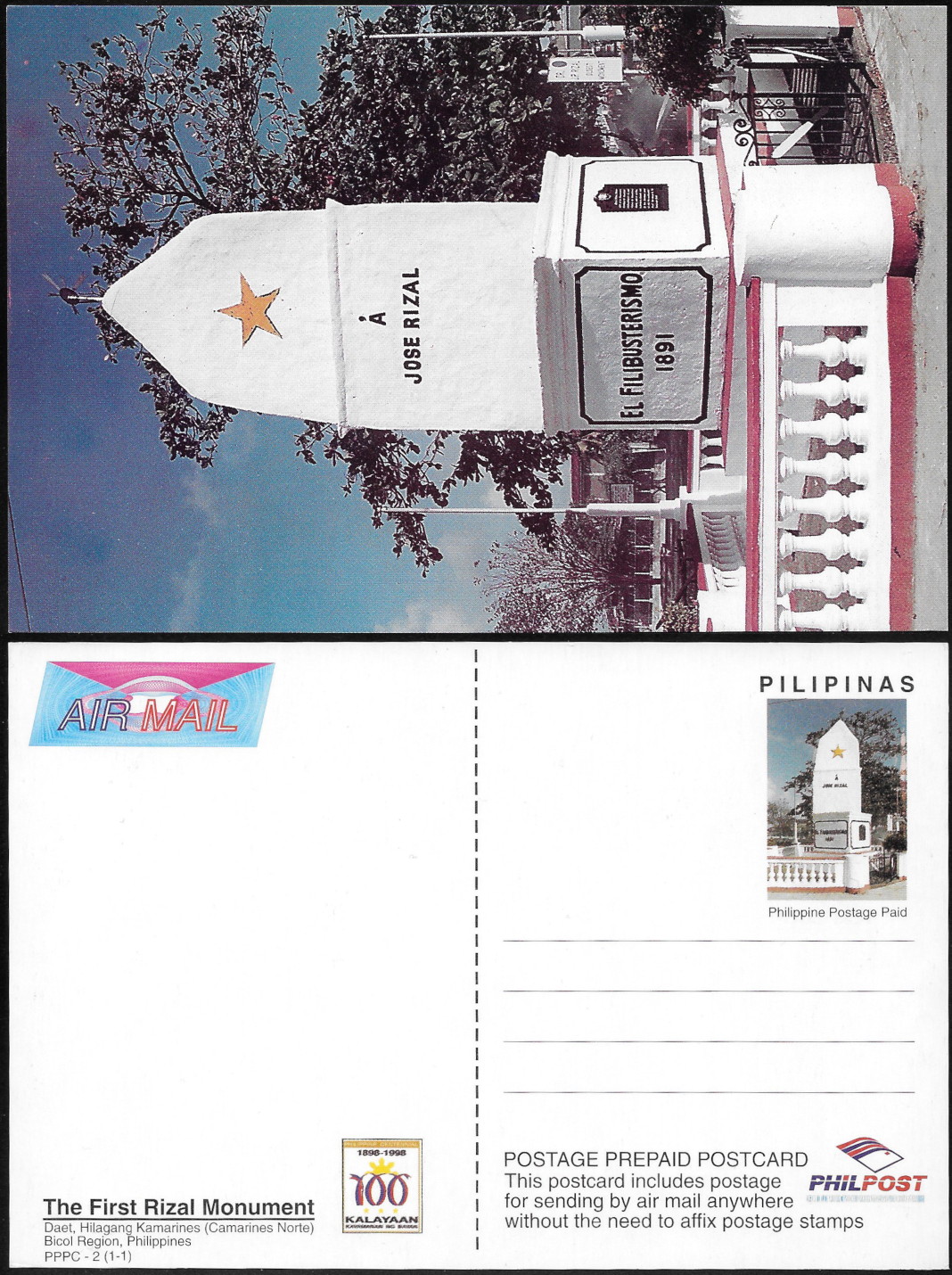 | 1998 | Card #8 – “The First Rizal Monument” from a set of 8 postal cards released in 1998. All cards (except #8) depict different scenes from a model on display at the Ayala Museum. Card #8 has a photograph of the Rizal Monument.
The set commemorates the centenary of Philippine Independence from the Spanish. |
| ???/??? | 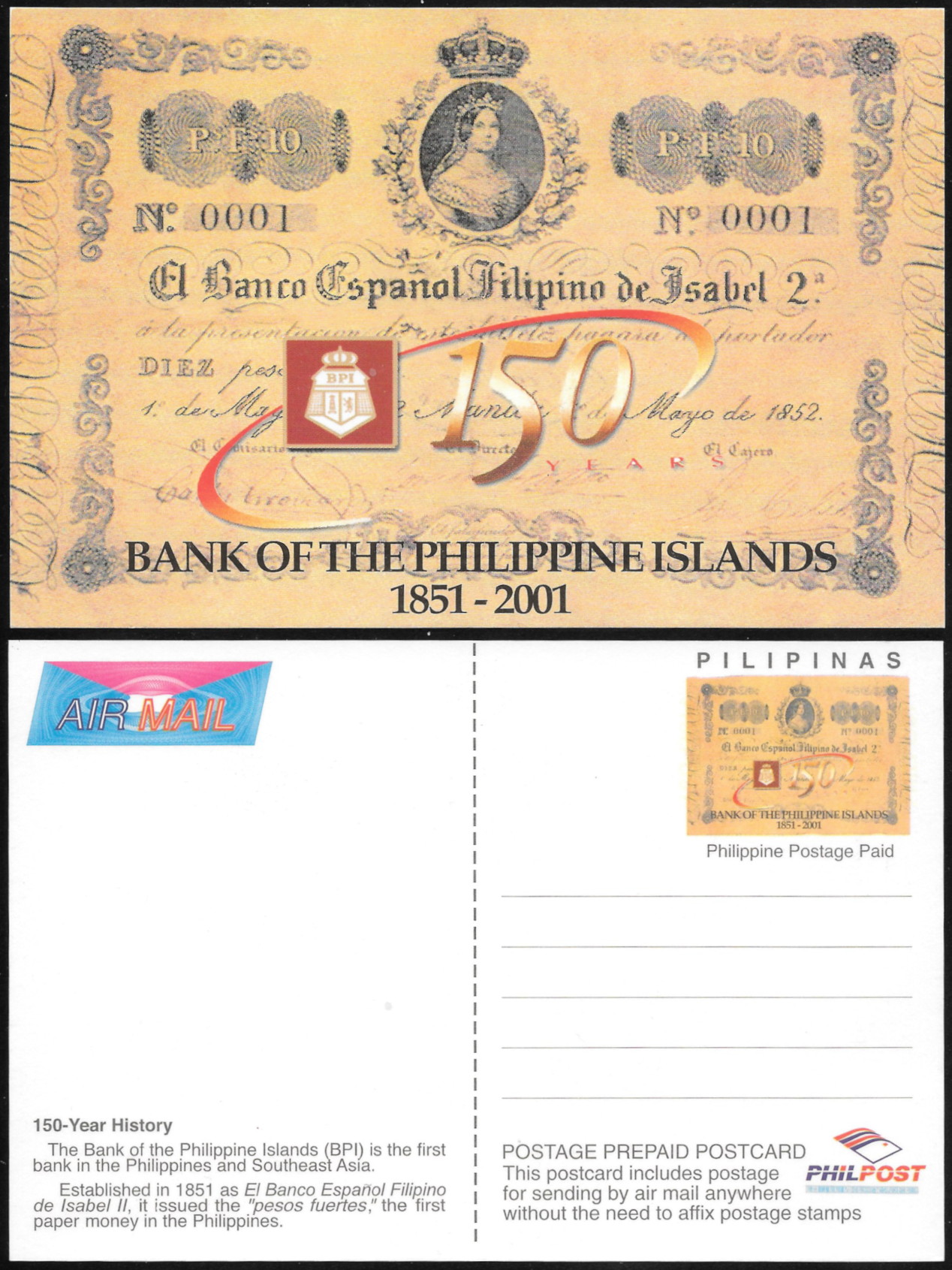 | 2001 | Released in 2001 to commemorate the 150th anniversary of the Bank of the Philippine Islands (BPI).
“150-Year History – The Bank of the Philippine Islands (BPI) is the first bank in the Philippines and Southeast Asia. Established in 1851 as El Banco Espanol Filipino de Isabel II, it issued the “pesos fuertes”, the first paper money in the Philippines”. |
| ???/??? | 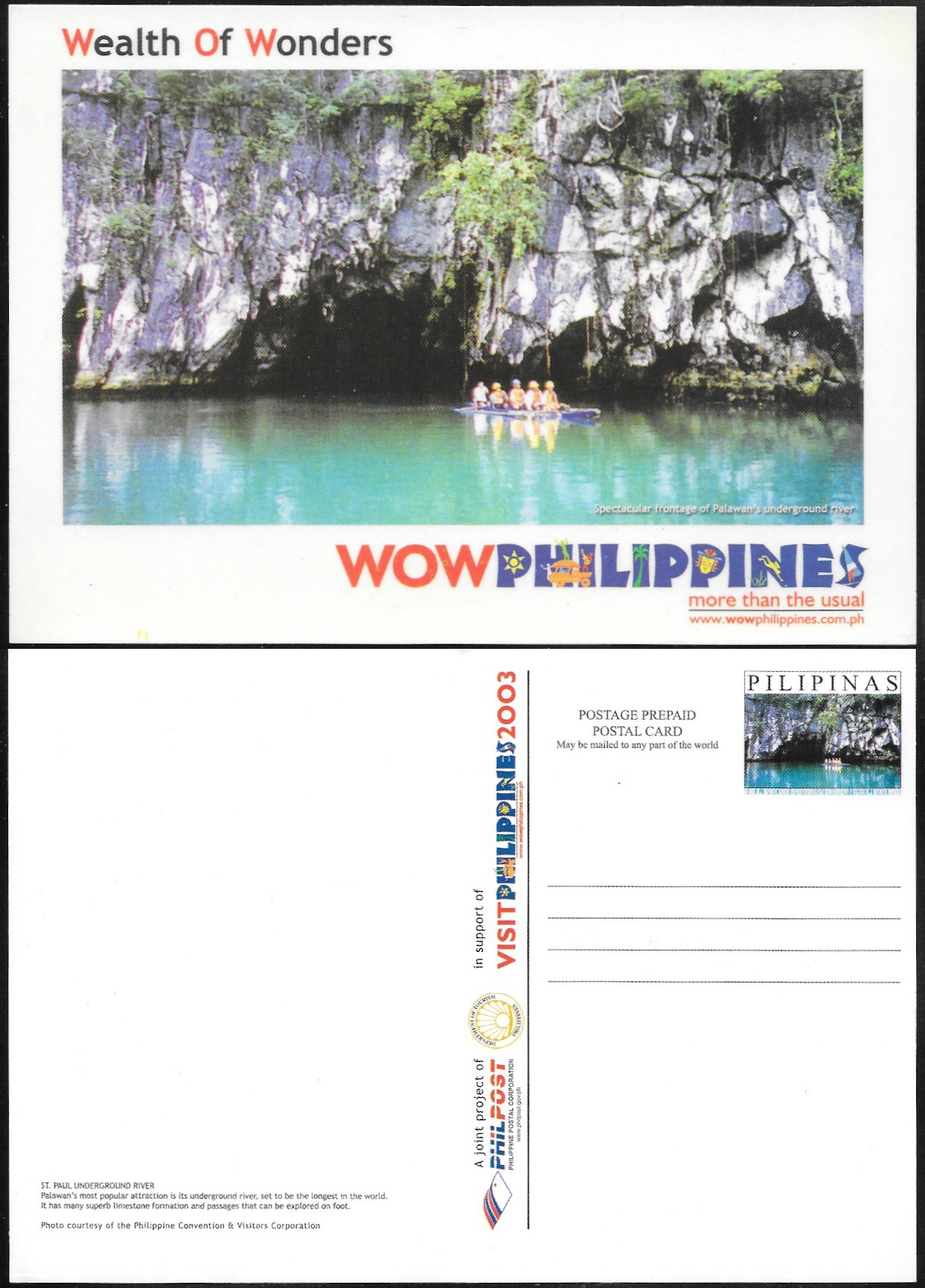 | 2002 | Card #1 – “St. Paul Underground River” of the 8 card “WOW Philippines” set. Released in 2002 as part of the “Visit Philippines 2003” tourism campaign highlighting places or animals of the Philippines.
“Palawan’s most popular attraction is its underground river, set to be the longest in the world. It has many superb limestone formations and passages that can be explored on foot.” |
| ???/??? | 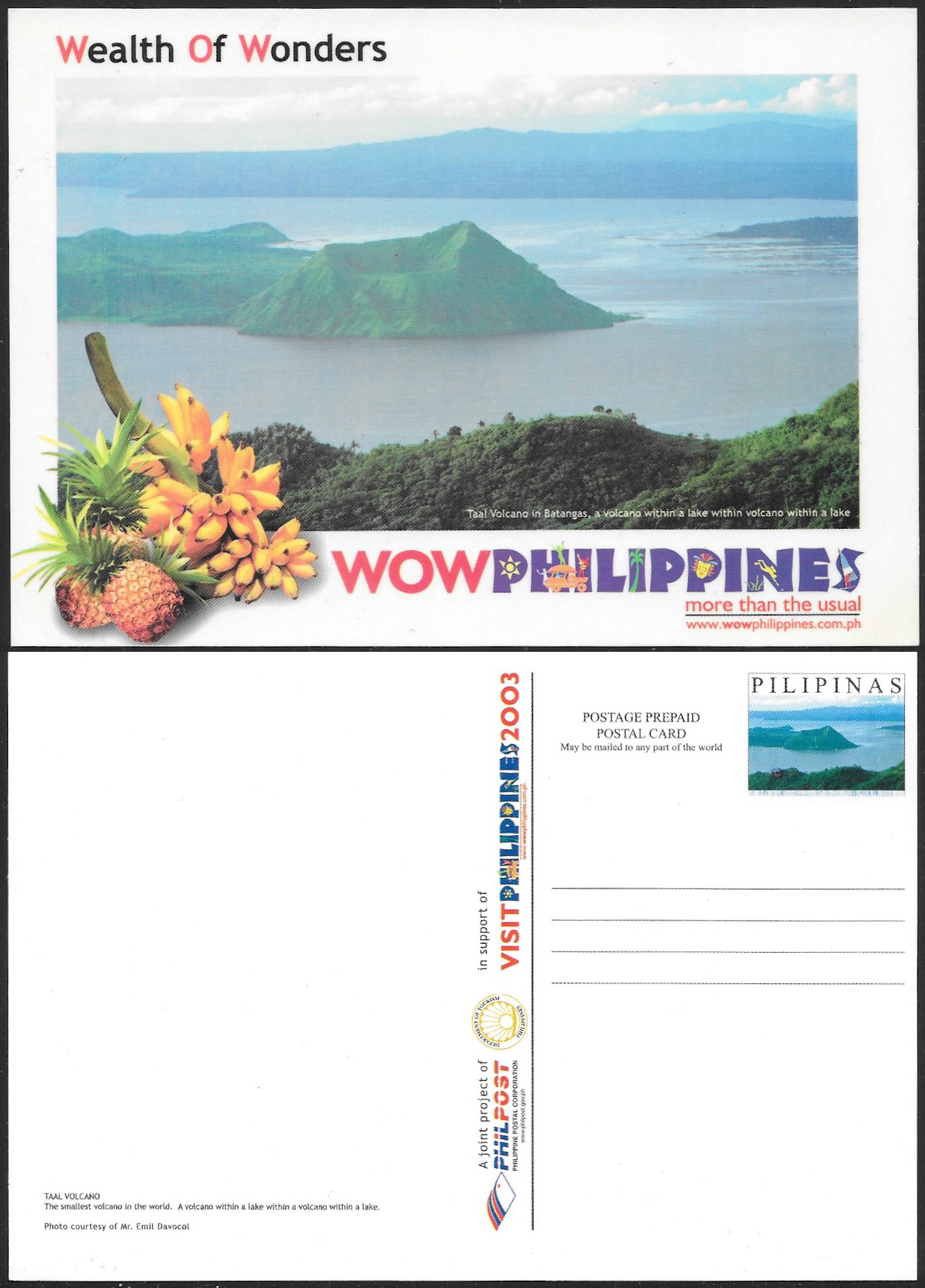 | 2002 | Card #2 – “Taal Volcano” of the 8 card “WOW Philippines” set. Released in 2002 as part of the “Visit Philippines 2003” tourism campaign highlighting places or animals of the Philippines.
“The smallest volcano in the world. It is a volcano within a lake within a volcano within a lake .” |
| ???/??? | 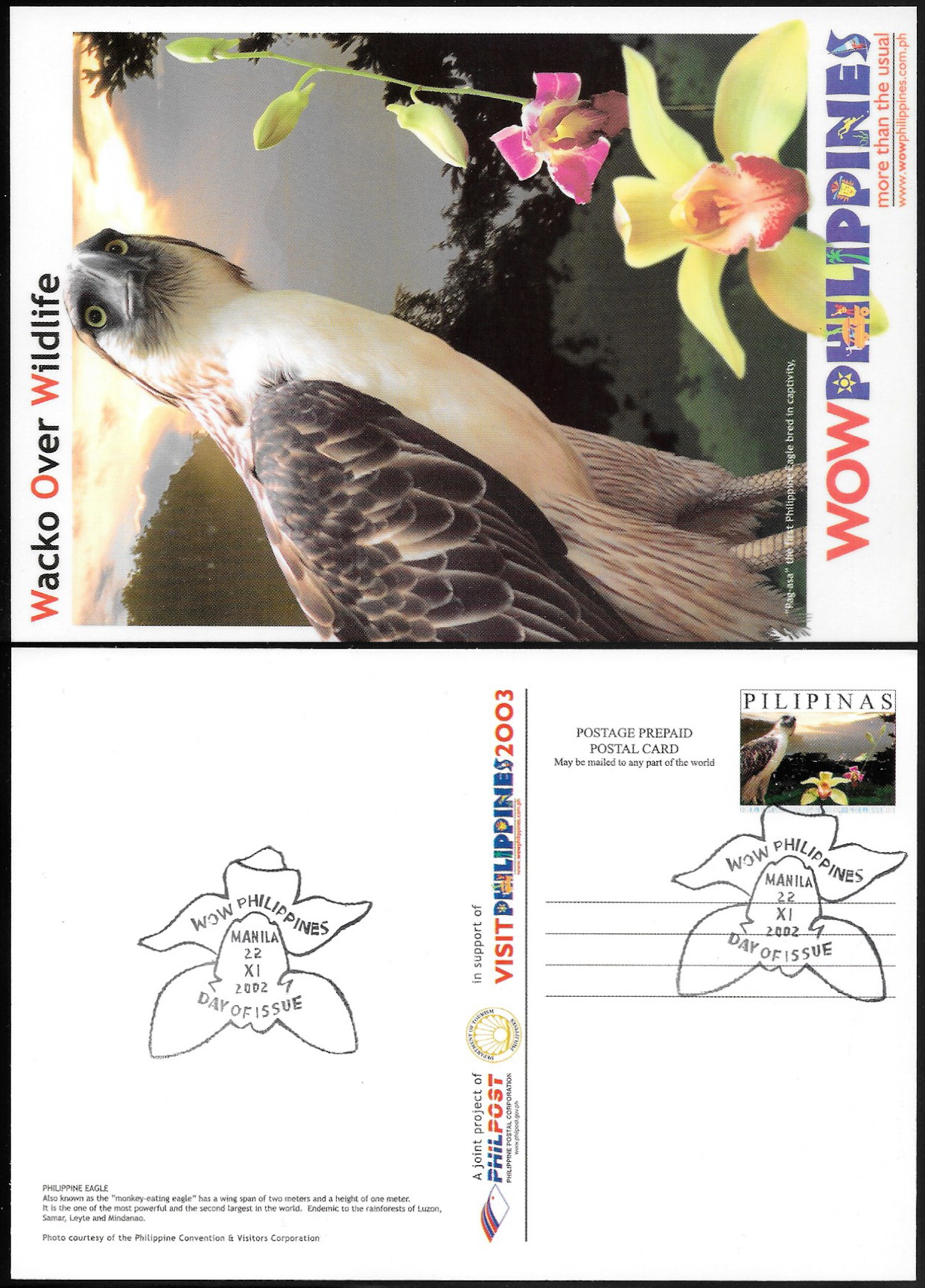 | 2002 | Card #3 – “Philippine Eagle” of the 8 card “WOW Philippines” set. Released in 2002 as part of the “Visit Philippines 2003” tourism campaign highlighting places or animals of the Philippines.
“Also known as the “monkey-eating eagle” has a wing span of two metres and a height of one meter. It is one of the most powerful and the second largest eagle in the world. Endemic to the rainforests of Luzon, Samar, Leyte and Mindanao.” |
| ???/??? | 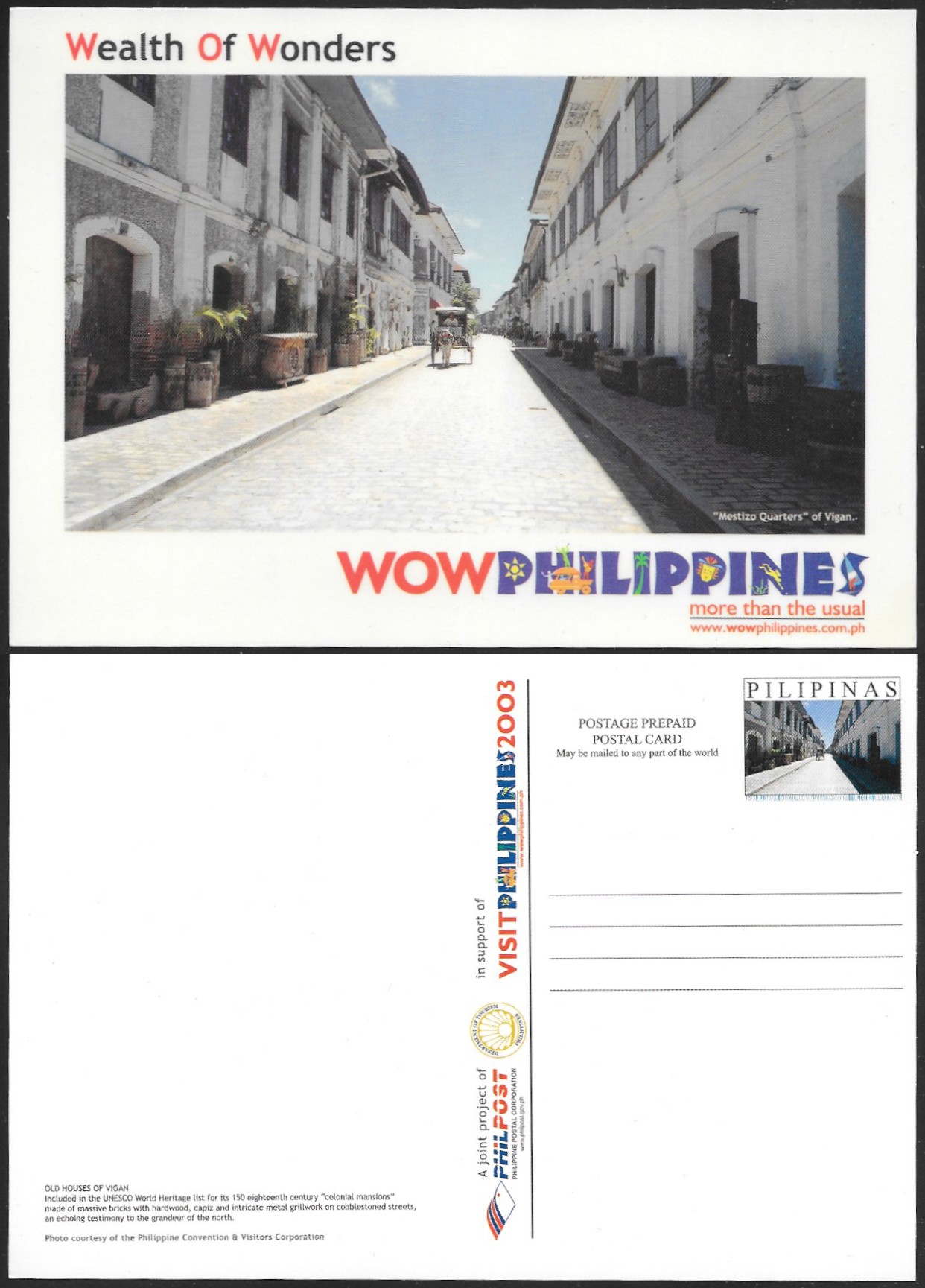 | 2002 | Card #4 – “Old Houses of Vigan” of the 8 card “WOW Philippines” set. Released in 2002 as part of the “Visit Philippines 2003” tourism campaign highlighting places or animals of the Philippines.
“Included in the UNESCO World Heritage list for its 150 eighteenth century “colonial mansions” made of massive bricks with hardwood, capiz and intricate grillwork on cobblestone streets, an echoing testimony to the grandeur of the north.” |
| ???/??? | 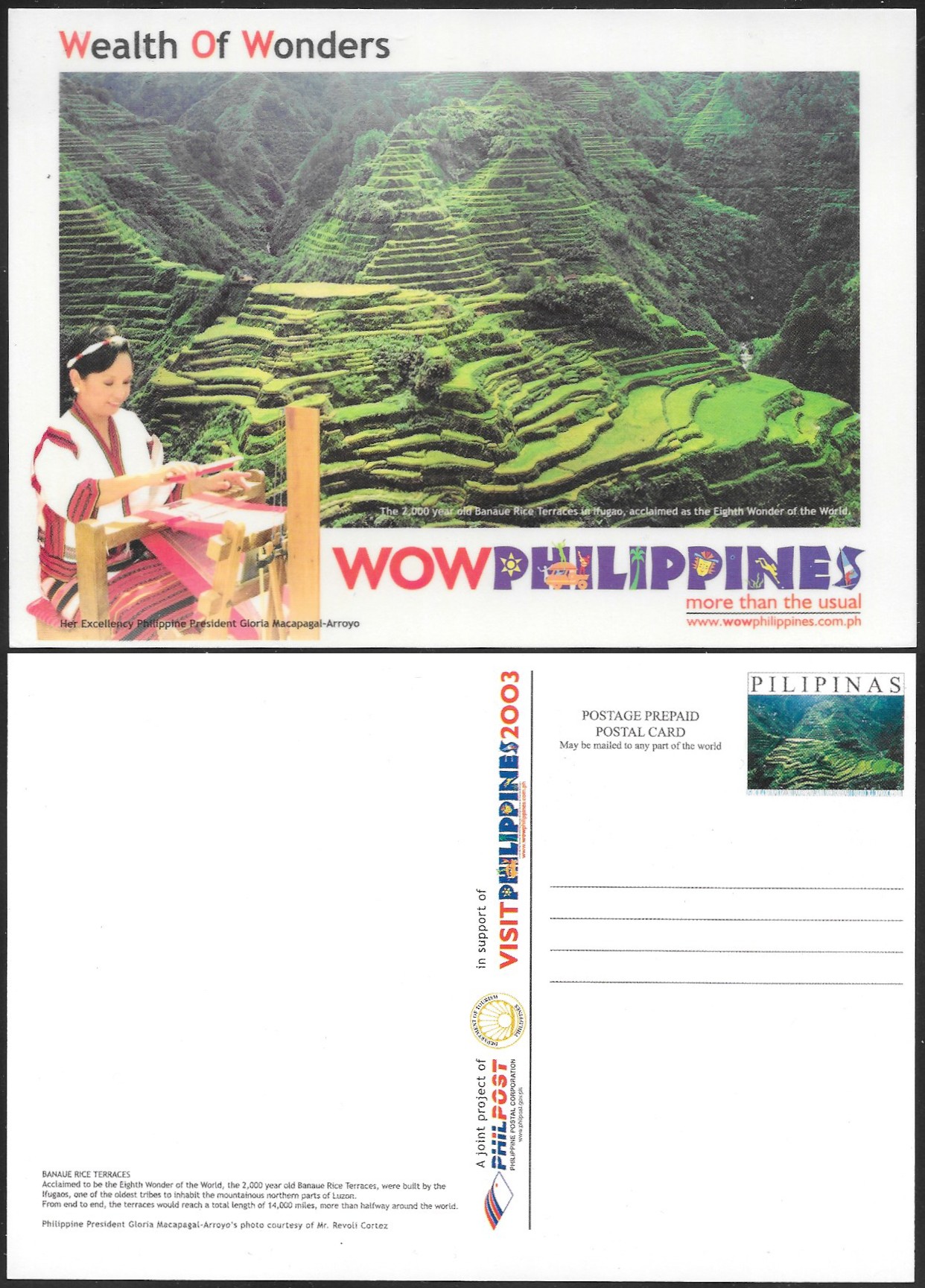 | 2002 | Card #5 – “Banaue Rice” of the 8 card “WOW Philippines” set. Released in 2002 as part of the “Visit Philippines 2003” tourism campaign highlighting places or animals of the Philippines.
“Banaue Rice Terraces” of the 8 card “WOW Philippines” set. Released in 2002 as part of the “Visit Philippines 2003” tourism campaign highlighting places or animals of the Philippines. |
| ???/??? | 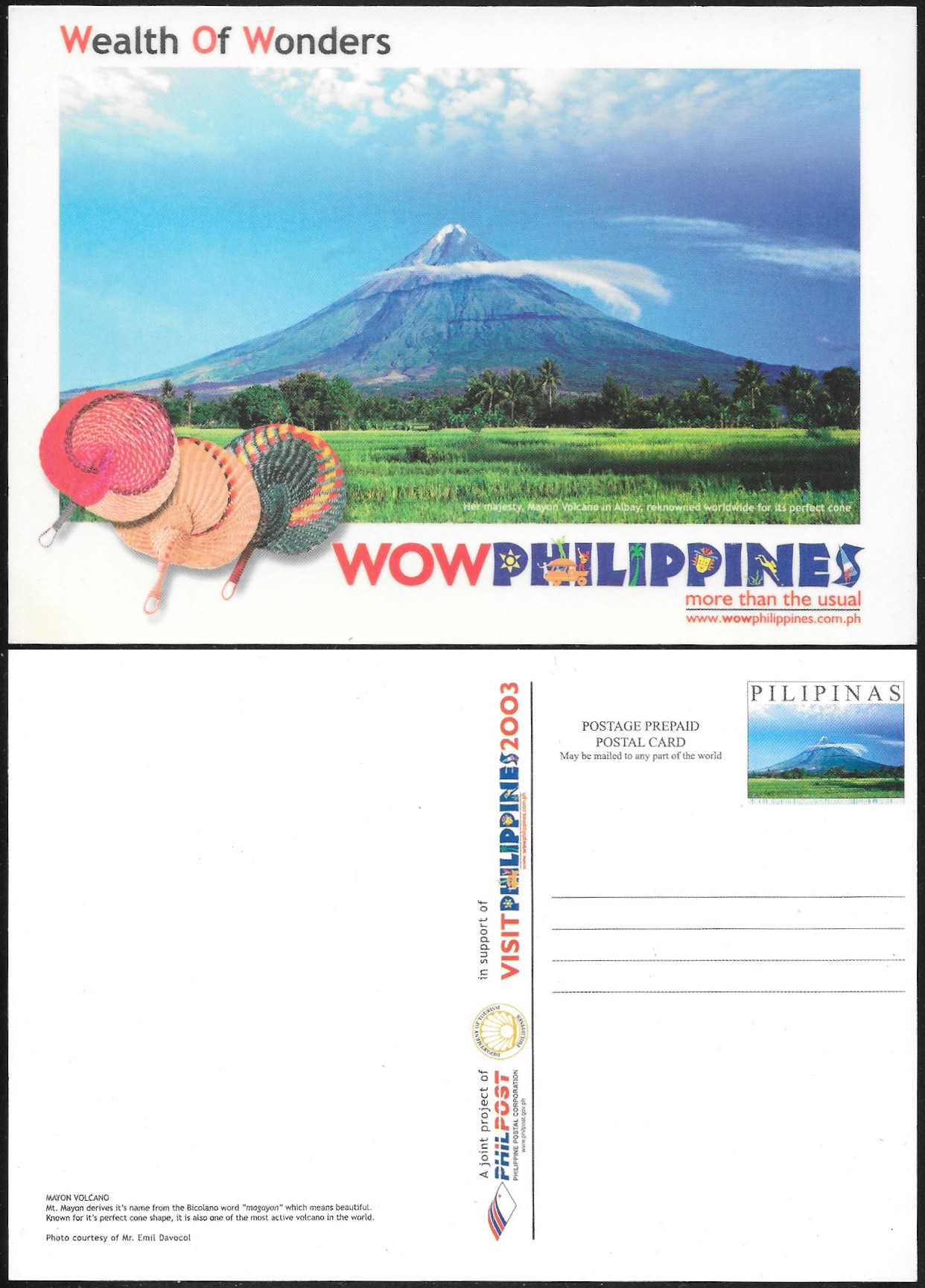 | 2002 | Card #6 – “Mayon Volcano” of the 8 card “WOW Philippines” set. Released in 2002 as part of the “Visit Philippines 2003” tourism campaign highlighting places or animals of the Philippines.
“Mt. Mayon derives it’s name from the Bicolano word “magayon” which means beautiful. Known for it’s perfect cone shape, it is also one of the most active volcano in the world.” |
| ???/??? | 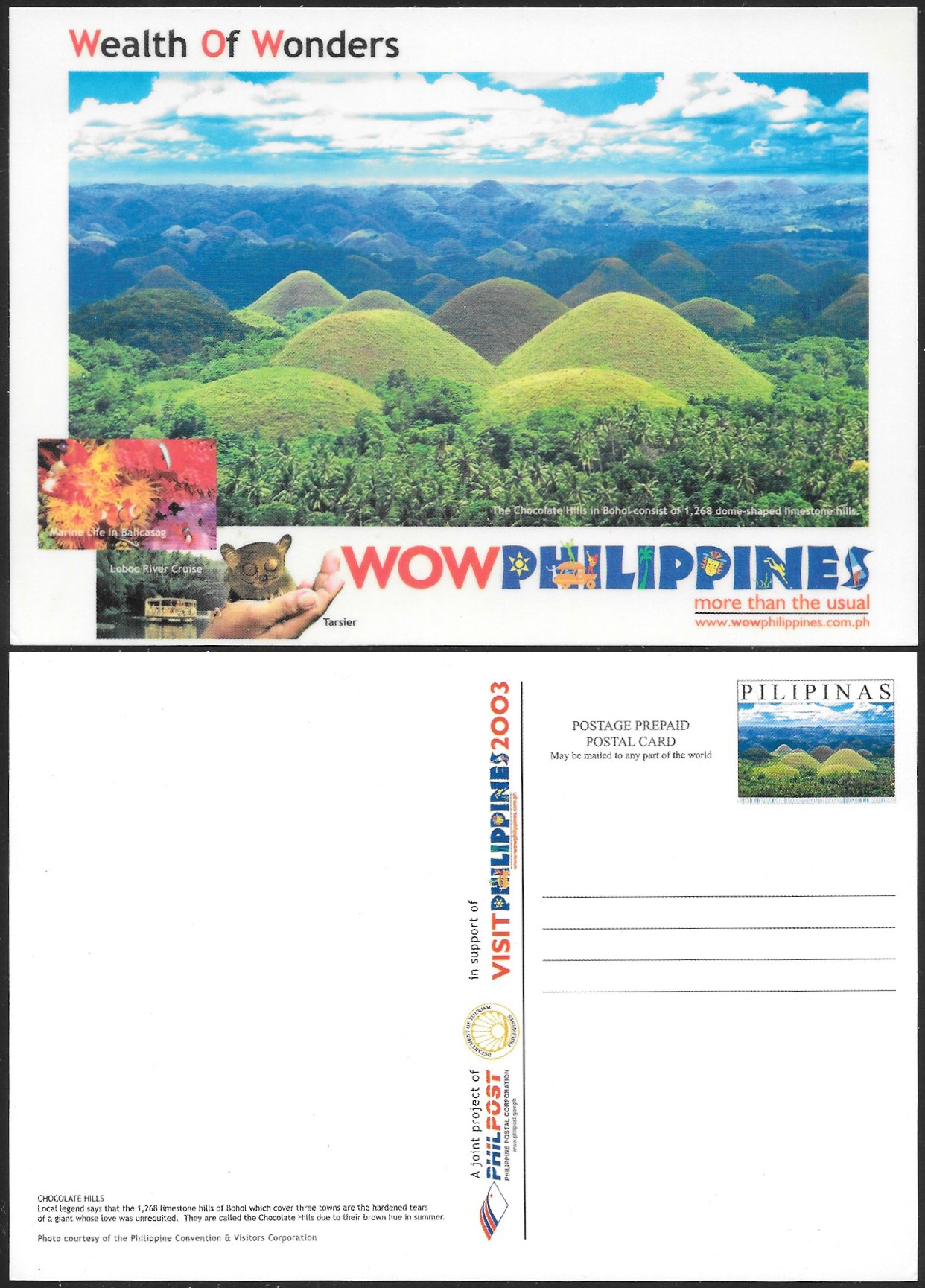 | 2002 | Card #7 – “Chocolate Hills” of the 8 card “WOW Philippines” set. Released in 2002 as part of the “Visit Philippines 2003” tourism campaign highlighting places or animals of the Philippines.
“Local legend says that the 1,268 limestone hills of Bohol which cover three towns are the hardened tears of a giant whose love was unrequited. They are call the Chocolate Hills due to their brown hue in summer.” |
| ???/??? | not acquired | 2002 | I have never seen the 8th postcard and am therefore unsure of the content. |
| ???/??? | 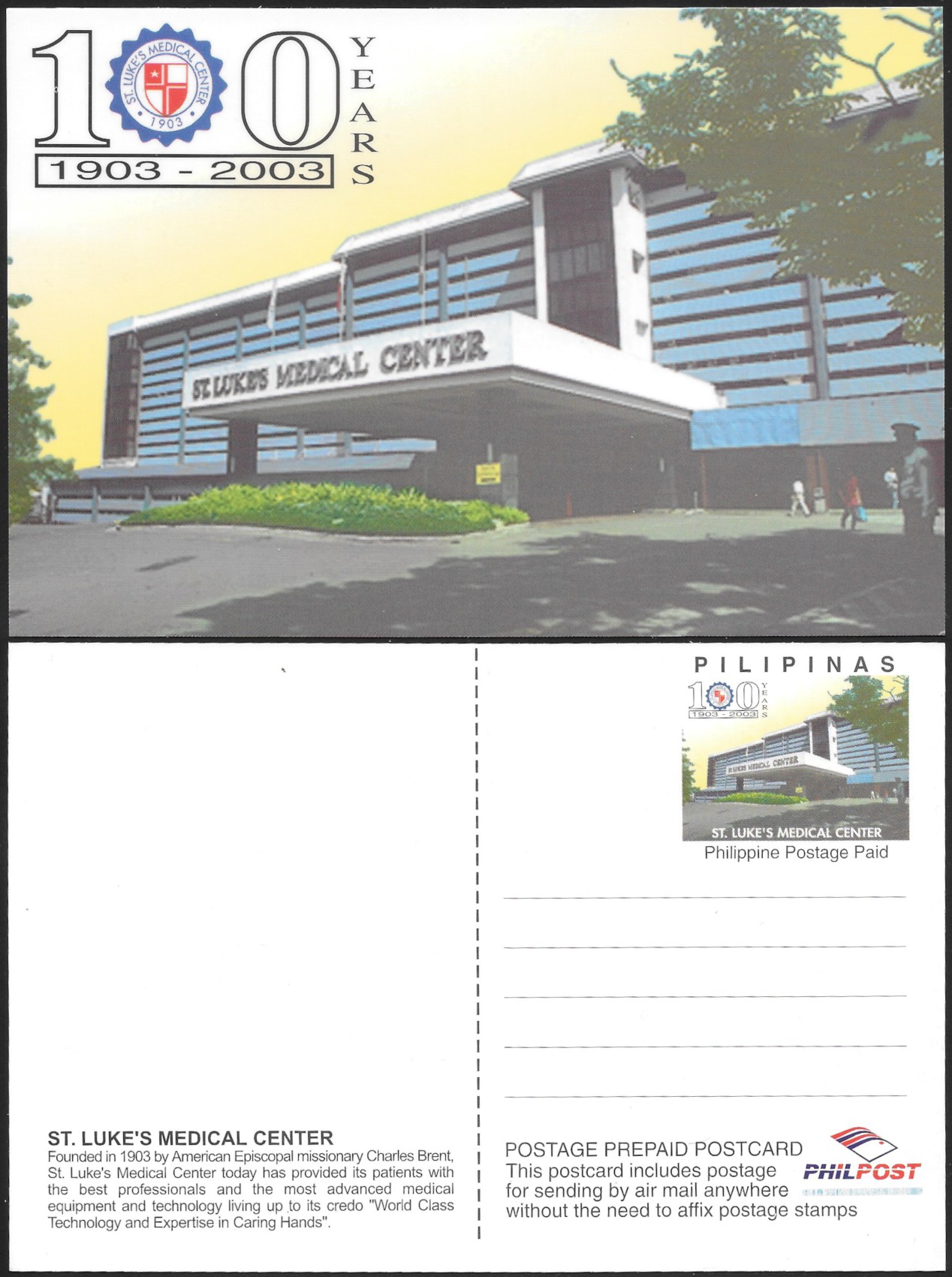 | 2003 | Released in 2003 to commemorate the 100th anniversary of the Saint Luke’s Medical Center in Quezon City.
“Founded in 1903 by American Episcopal missionary Charles Brent, St. Luke’s Medical Centre today has provided its patients with the best professionals and the most advanced medical equipment and technology living up to its credo “World Class Technology and Expertise in Caring Hands”. |
| ???/??? | 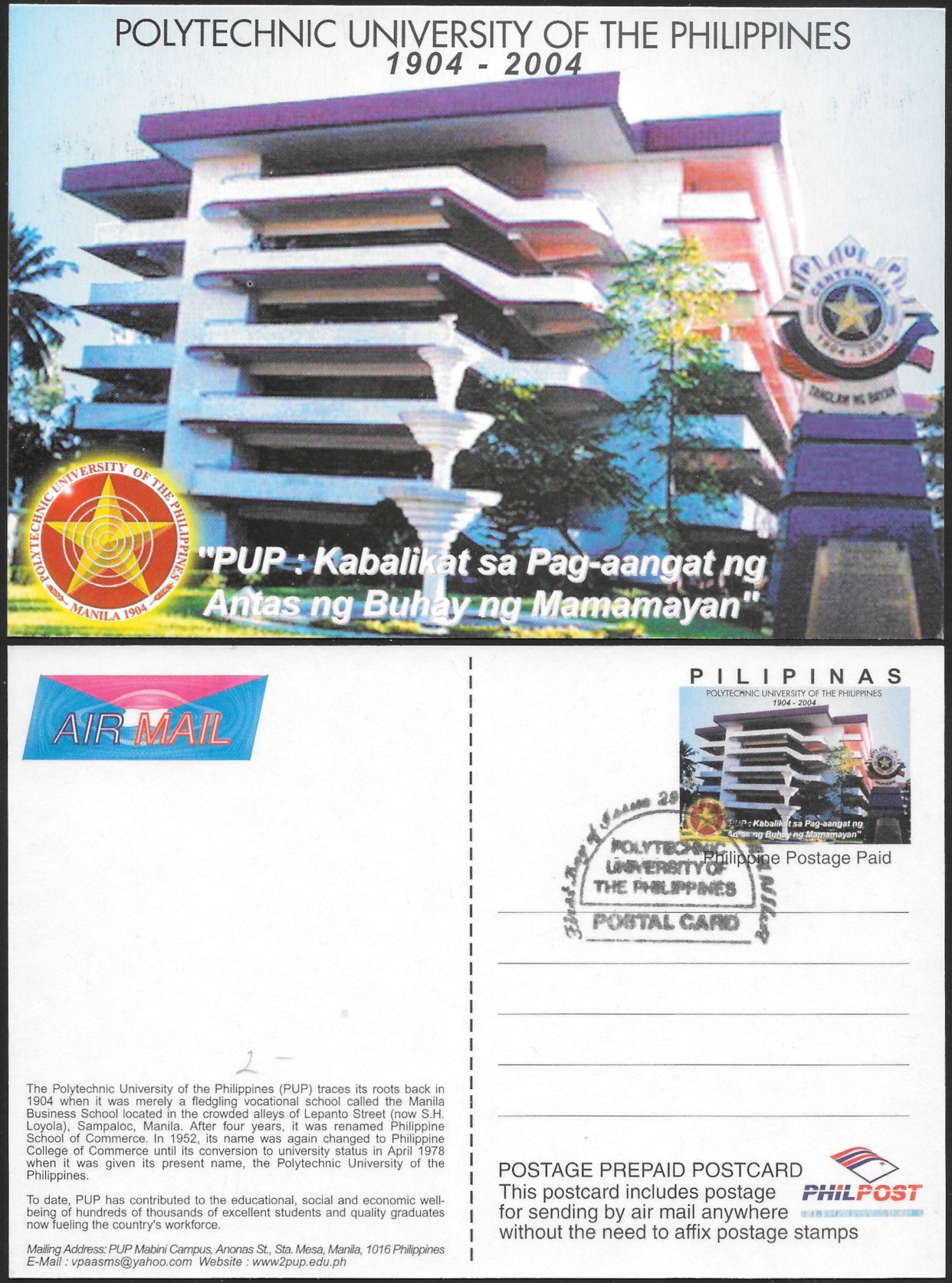 | 2004 | Released in 2004 to commemorate the 100th anniversary of the Polytechnic University of the Philippines in Manila.
“The Polytechnic University of the Philippines (PUP) traces its roots back to 1904 when it was merely a fledgling vocational school called the Manila Business School located in the crowded alleys of Lepanto Street (now S.H. Loyola), Sampaloc, Manila. After 4 years, it was renamed Philippine School of Commerce. In 1952, its name was again changed to Philippine College of Commerce until its conversion to university status in April 1978 when it was given its present name, the Polytechnic University of the Philippines”. |
| ???/??? | 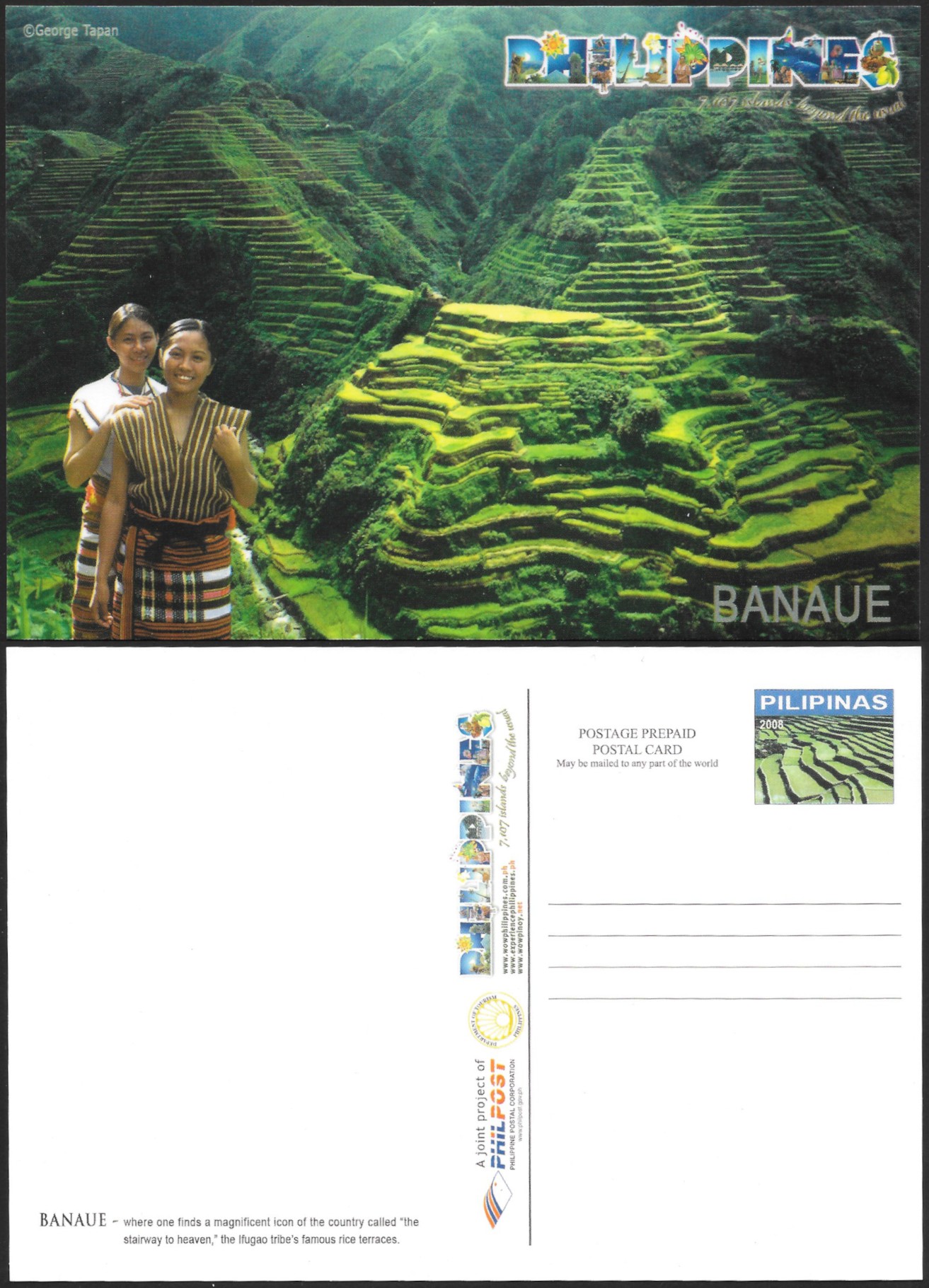 | 2008 | Card #1 – “Banaue”.
10 individual postal cards make up the “Philippines 7107 Islands Beyond the Usual” series. Each postal card depicts a tourist destination in the Philippines.
“Banaue – where one finds a magnificent icon of the country called “the stairway to heaven”, the Ifugao tribe’s famous rice terraces”. |
| ???/??? | 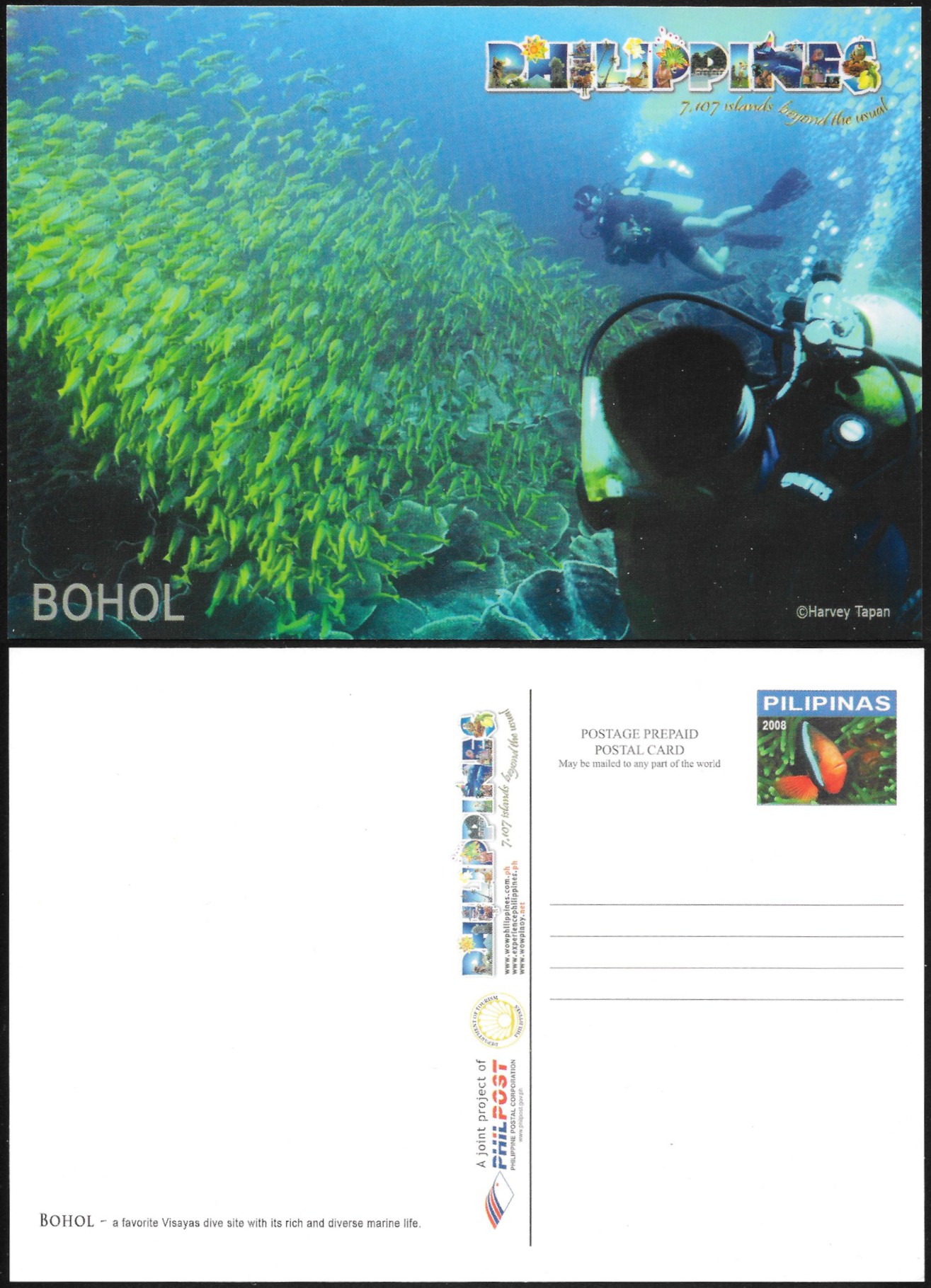 | 2008 | Card #2 – “Bohol”.
10 individual postal cards make up the “Philippines 7107 Islands Beyond the Usual” series. Each postal card depicts a tourist destination in the Philippines.
“Bohol – a favorite Visayas dive site with its rich and diverse marine life”. |
| ???/??? | 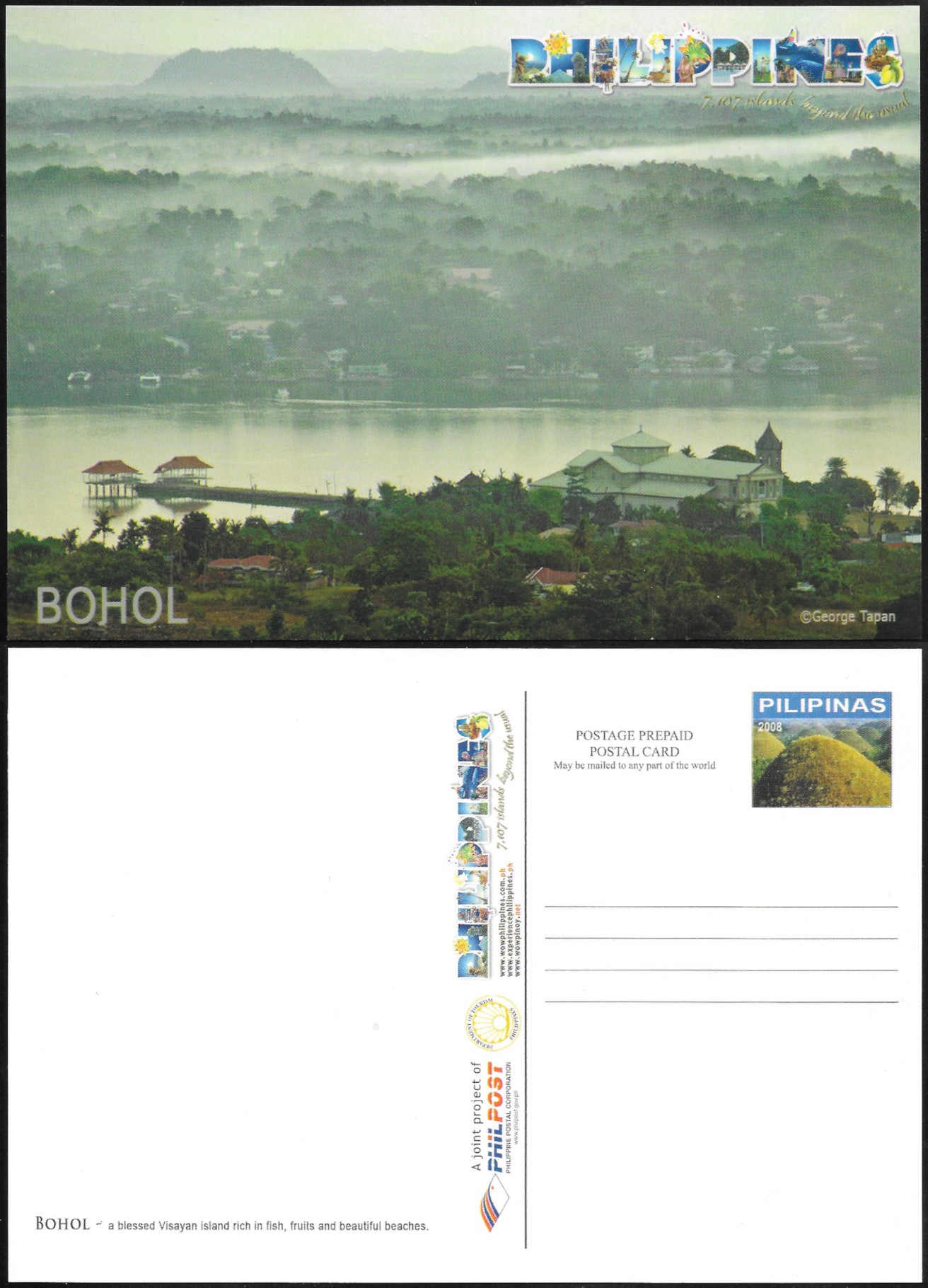 | 2008 | Card #3 – “Bohol”.
10 individual postal cards make up the “Philippines 7107 Islands Beyond the Usual” series. Each postal card depicts a tourist destination in the Philippines.
“Bohol – a blessed Visayan island rich in fish, fruits and beautiful beaches”. |
| ???/??? | 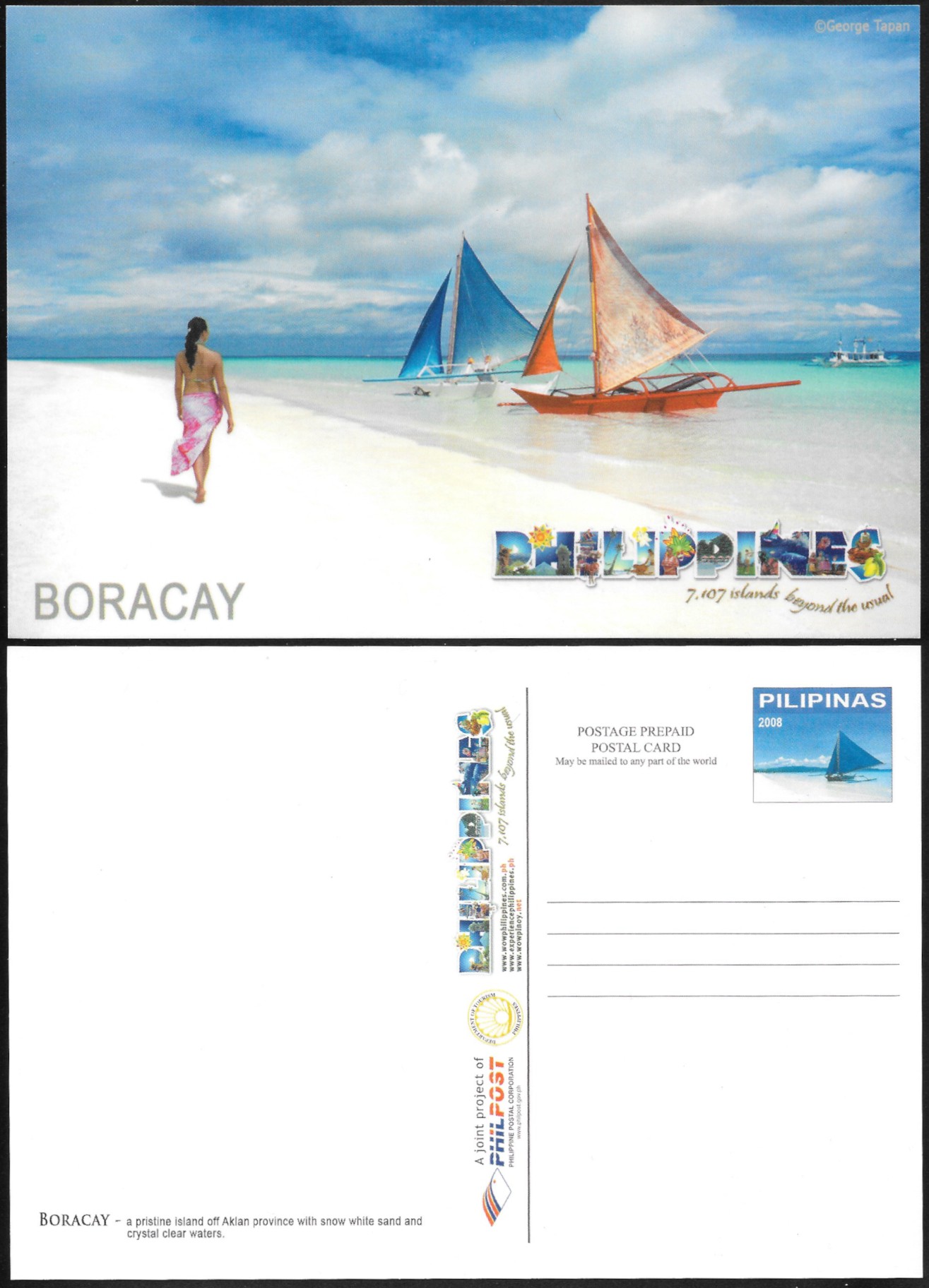 | 2008 | Card #4 – “Boracay”.
10 individual postal cards make up the “Philippines 7107 Islands Beyond the Usual” series. Each postal card depicts a tourist destination in the Philippines.
“Boracay – a pristine island off Aklan province with snow white sand and crystal clear waters”. |
| ???/??? | 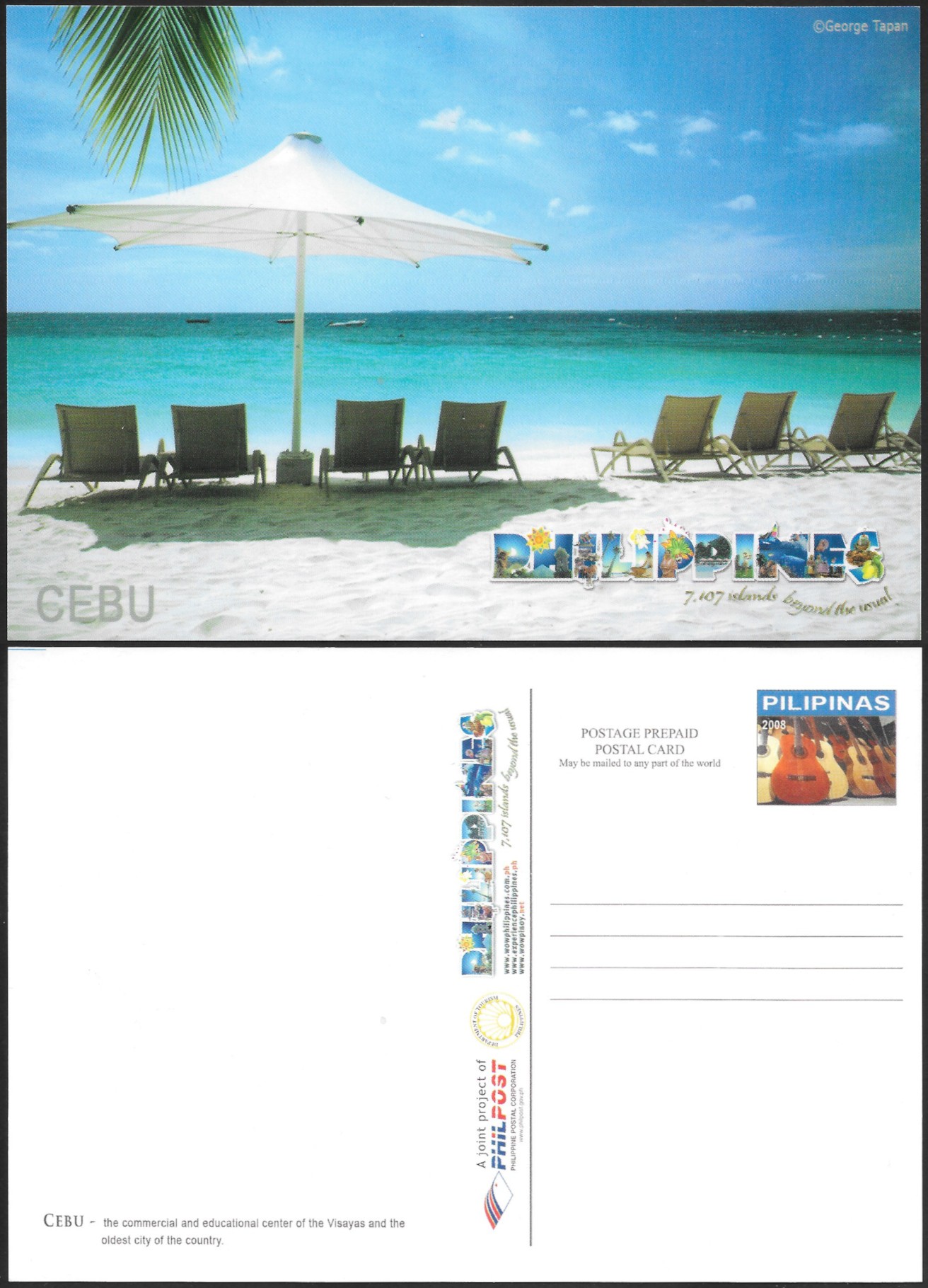 | 2008 | Card #5 – “Cebu”.
10 individual postal cards make up the “Philippines 7107 Islands Beyond the Usual” series. Each postal card depicts a tourist destination in the Philippines.
“Cebu – the commercial and educational center of the Visayas and the oldest city of the country”. |
| ???/??? | 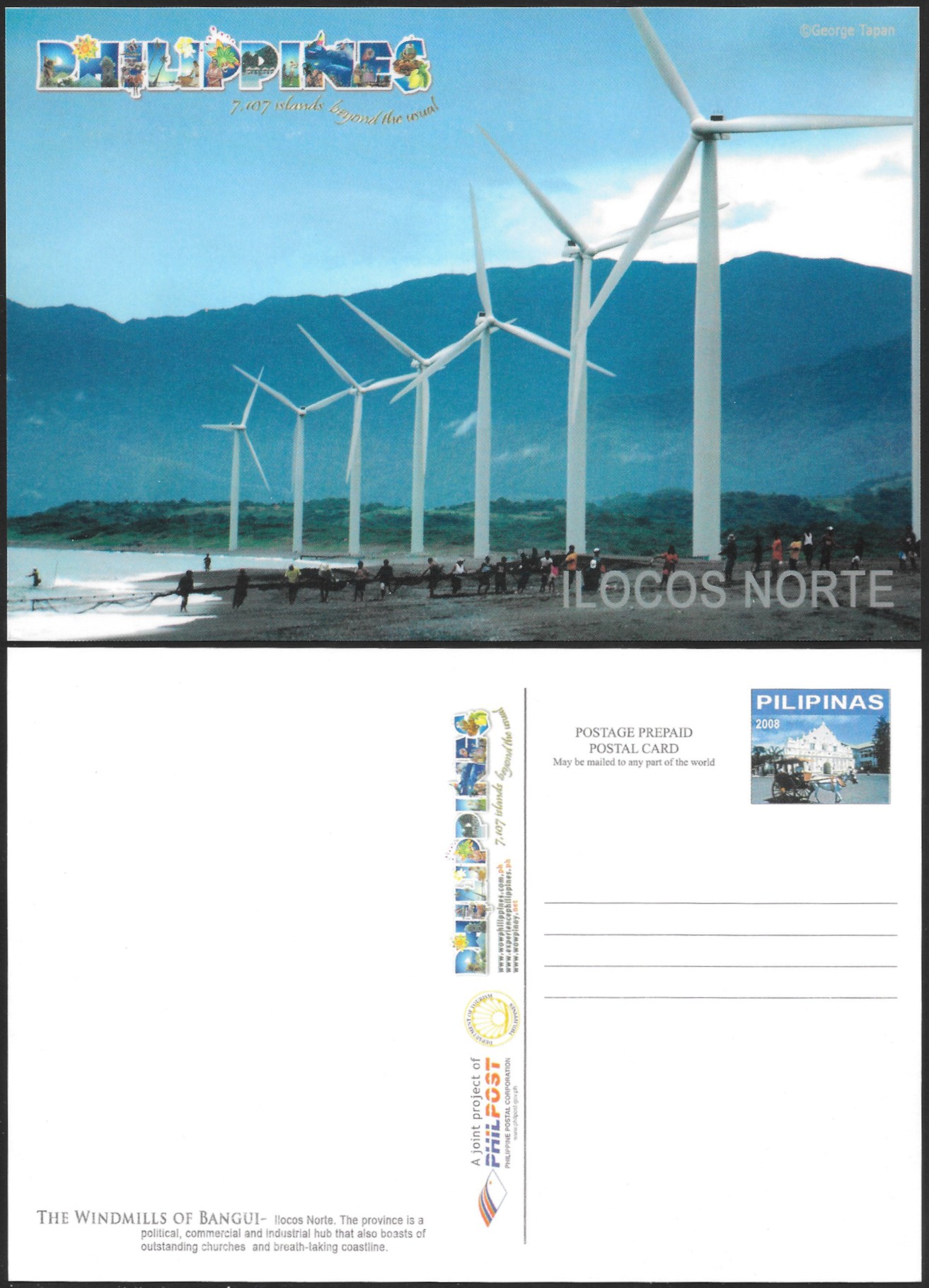 | 2008 | Card #6 – “Ilocos Norte”.
10 individual postal cards make up the “Philippines 7107 Islands Beyond the Usual” series. Each postal card depicts a tourist destination in the Philippines.
“The Windmills of Bangui – Olocos Norte. The province is a political, commercial and industrial hub that also boasts of outstanding churches and breath-taking coastline”. |
| ???/??? | 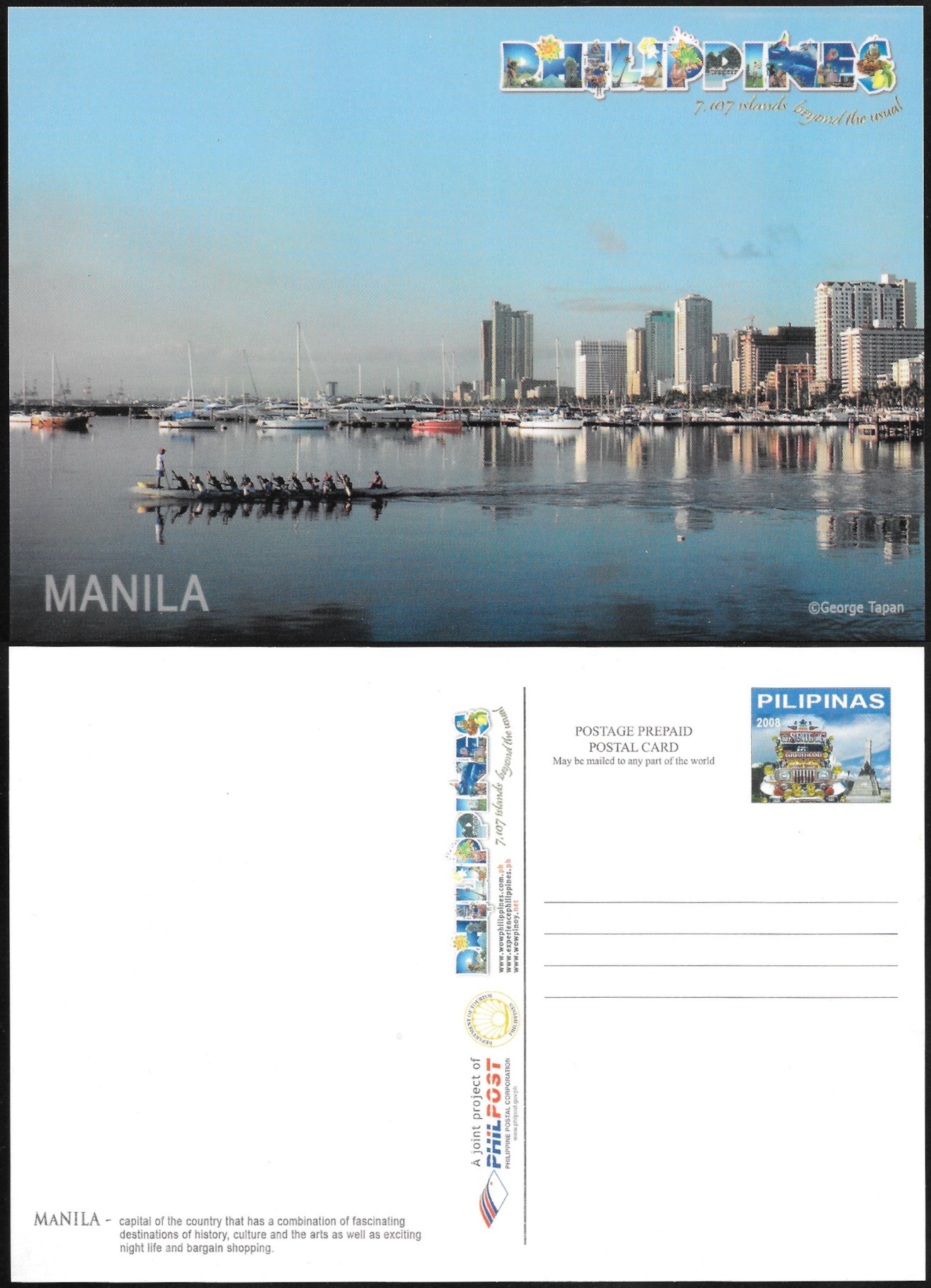 | 2008 | Card #7 – “Manila”.
10 individual postal cards make up the “Philippines 7107 Islands Beyond the Usual” series. Each postal card depicts a tourist destination in the Philippines.
“Manila – capital of the country that ha a combination of fascinating destinations of history, culture and the arts as well as exciting night life and bargain shopping”.
|
| ???/??? | 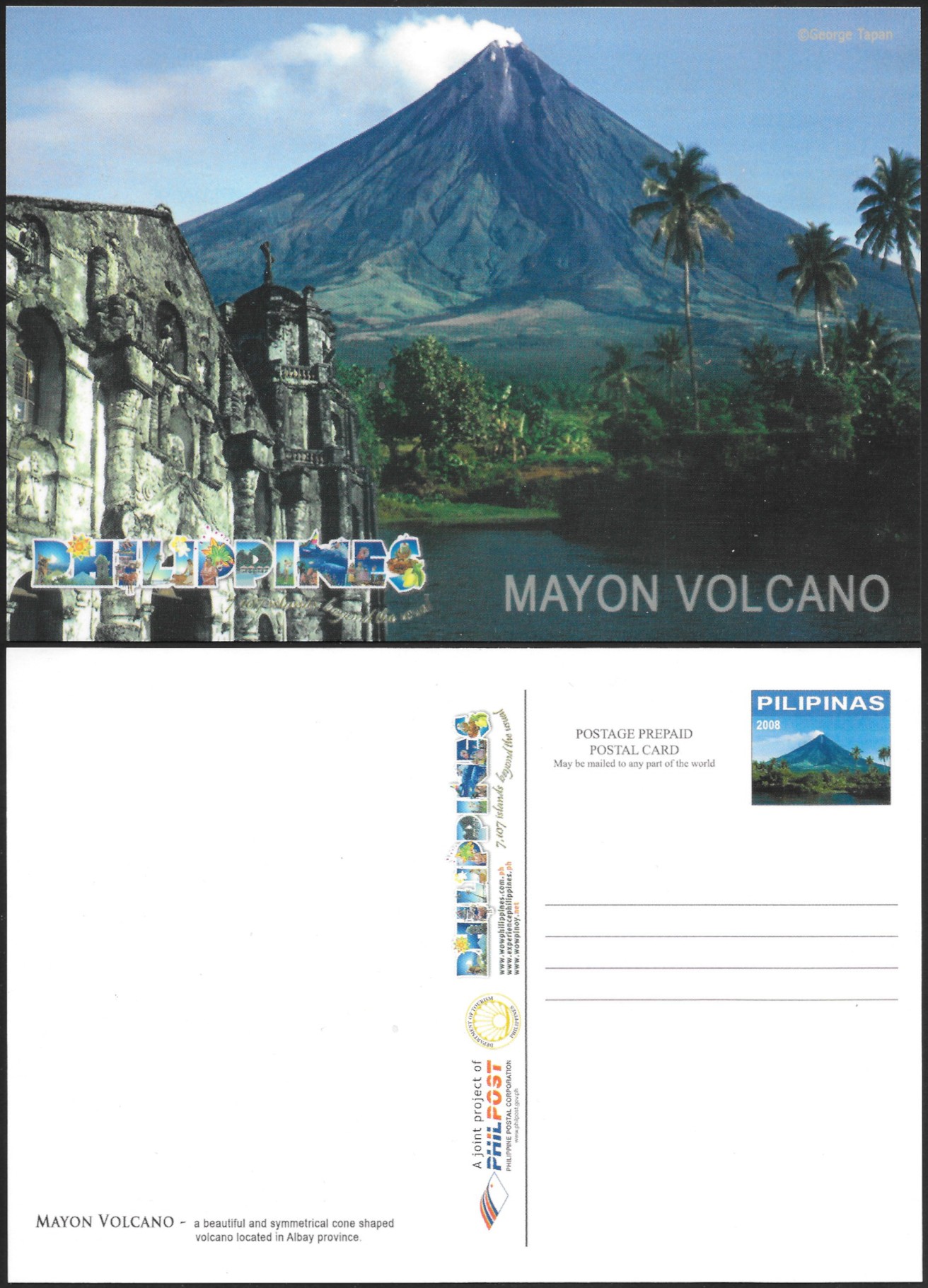 | 2008 | Card #8 – “Mayon Volcano”.
10 individual postal cards make up the “Philippines 7107 Islands Beyond the Usual” series. Each postal card depicts a tourist destination in the Philippines.
“Mayon Volcano – a beautiful and symmetrical cone shaped volcano located in Albay province”. |
| ???/??? | 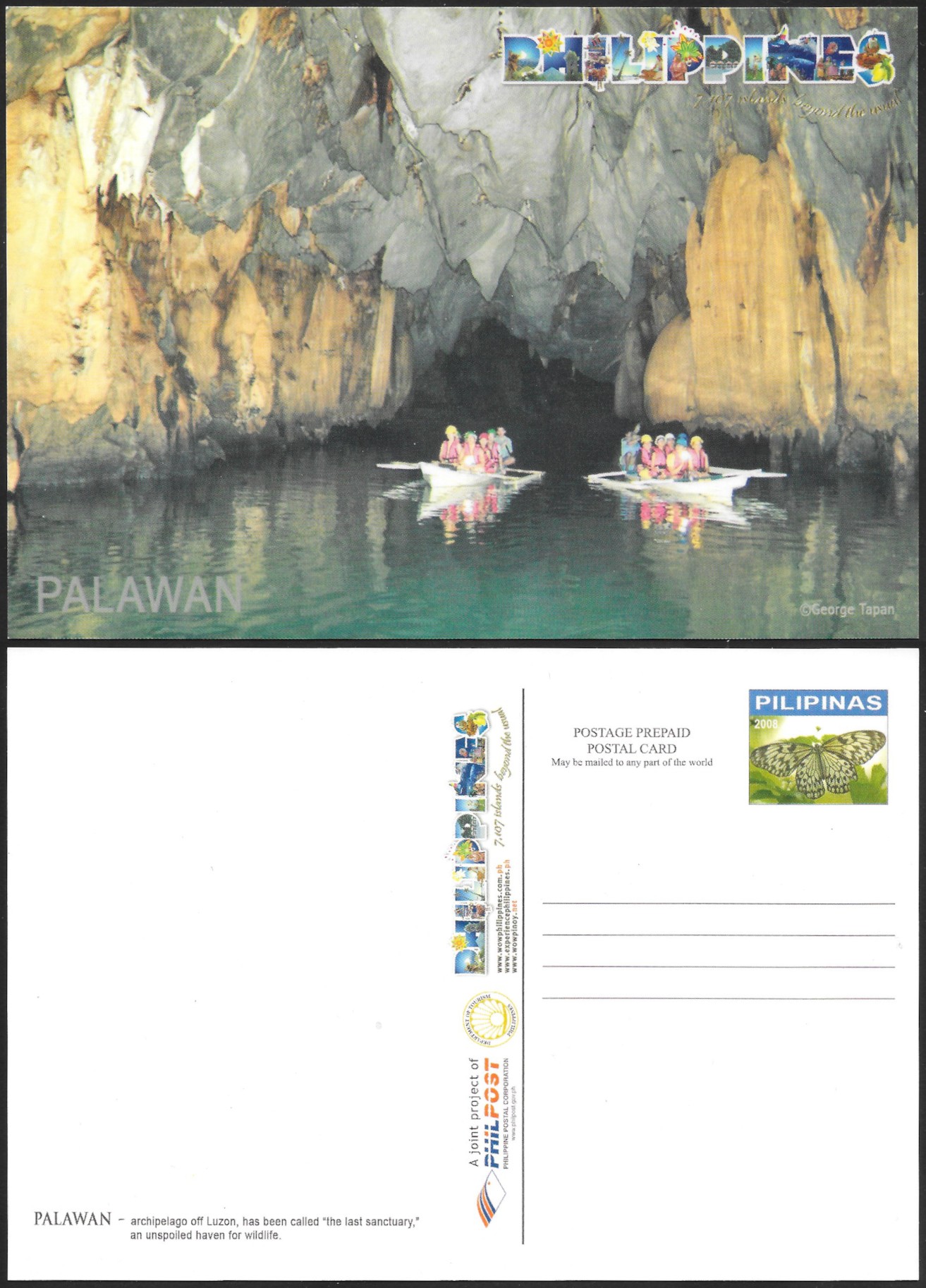 | 2008 | Card #9 – “Palawan”.
10 individual postal cards make up the “Philippines 7107 Islands Beyond the Usual” series. Each postal card depicts a tourist destination in the Philippines.
“Palawan – archipelago off Luzon, has been called “the last sanctuary”, an unspoiled haven for wildlife”. |
| ???/??? | 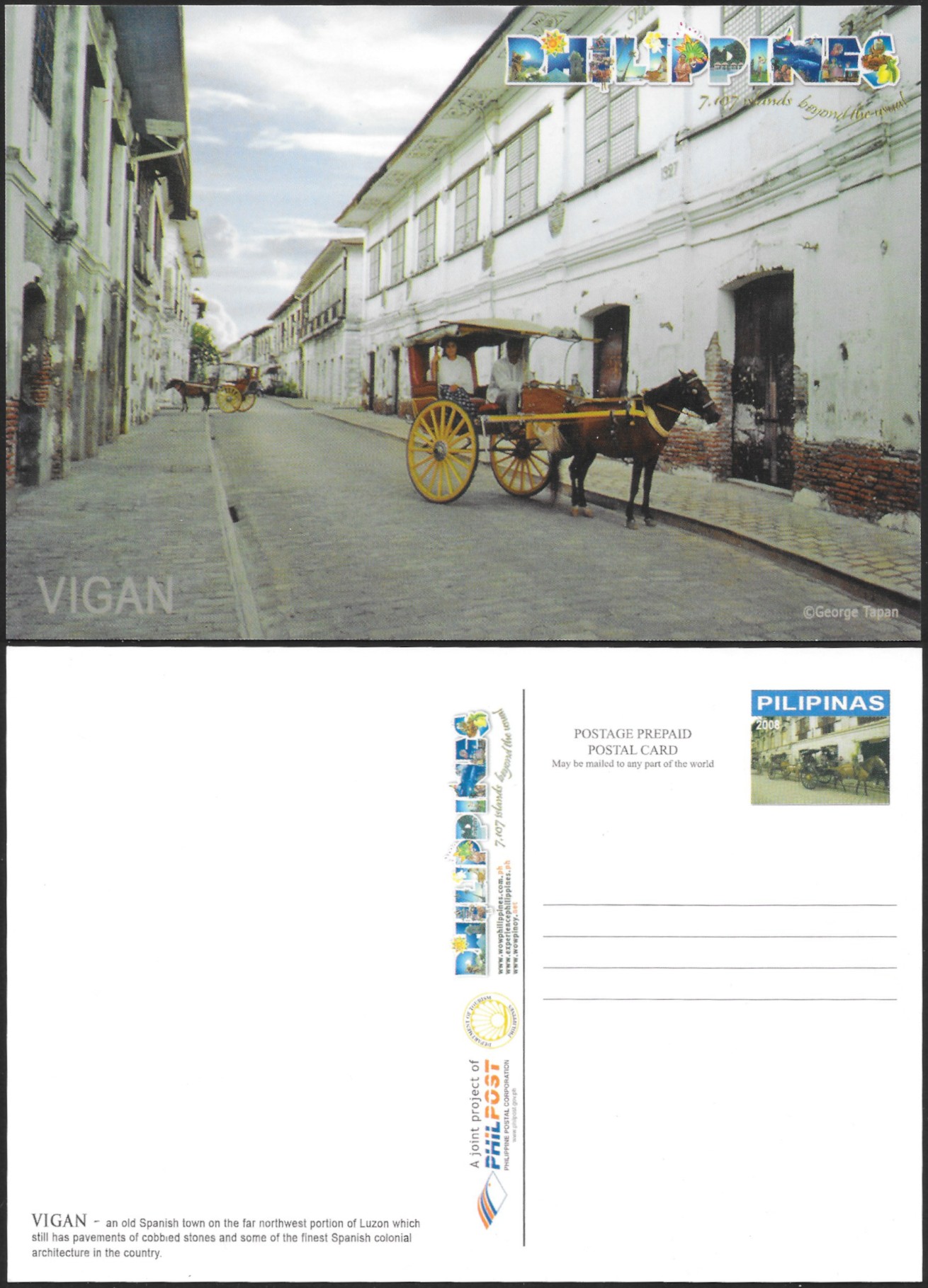 | 2008 | Card #10 – “Vigan”.
10 individual postal cards make up the “Philippines 7107 Islands Beyond the Usual” series. Each postal card depicts a tourist destination in the Philippines.
“Vigan – an old Spanish town on the far northwest portion of Luzon which still has pavements of cobbled stones and some of the finest Spanish colonial architecture”. |








































